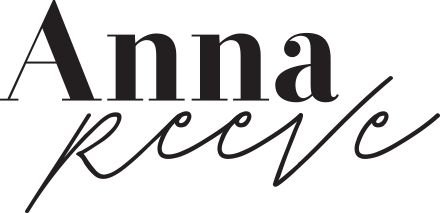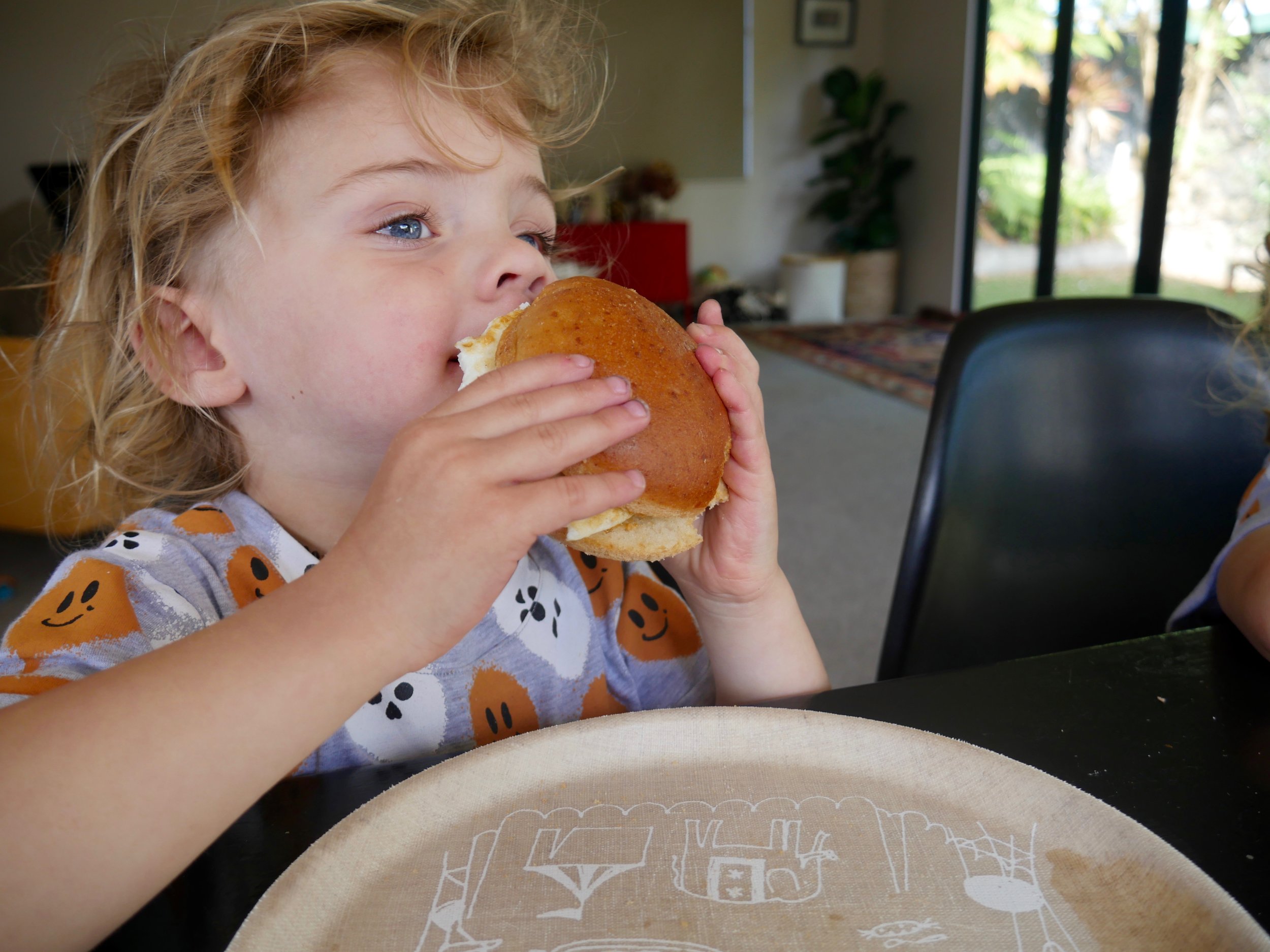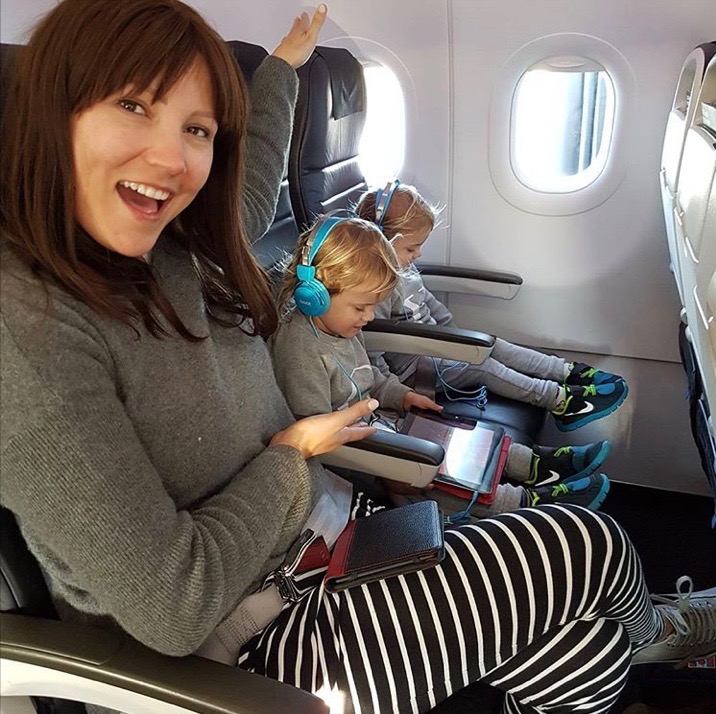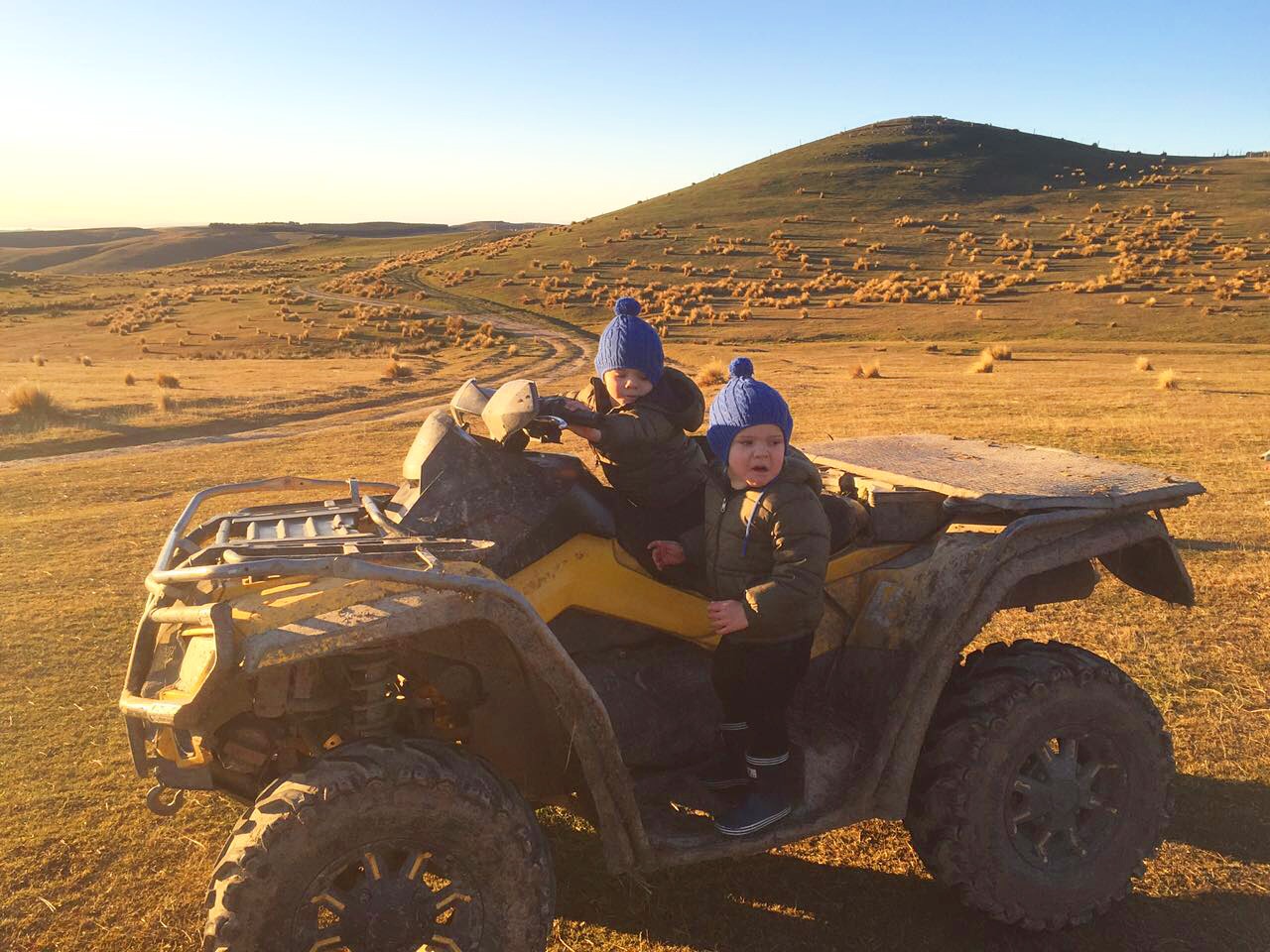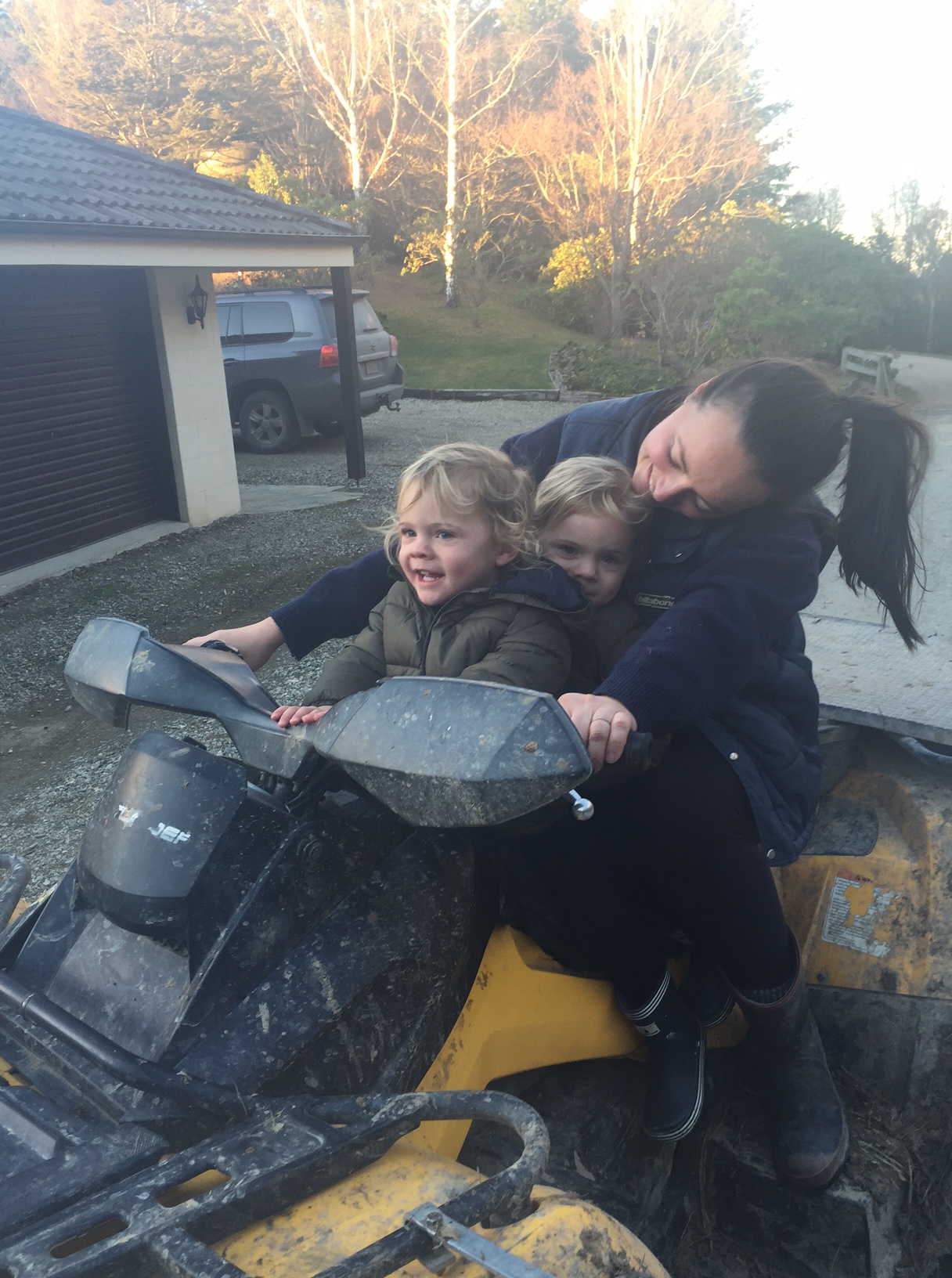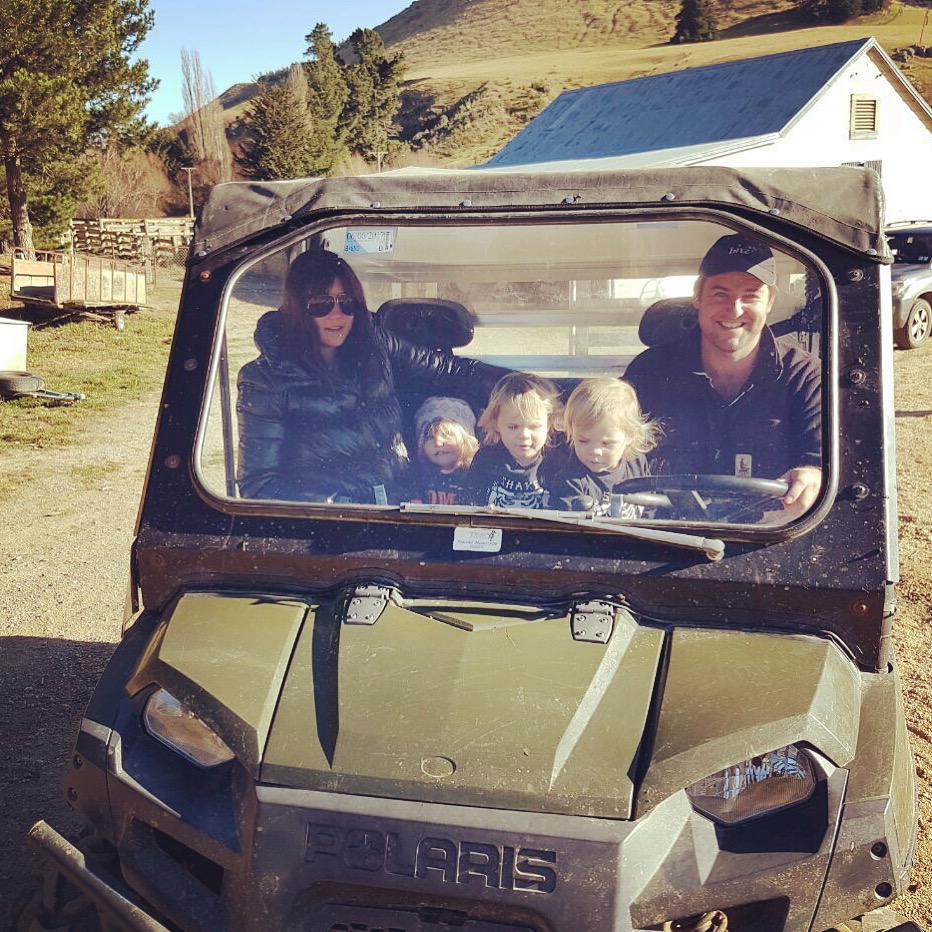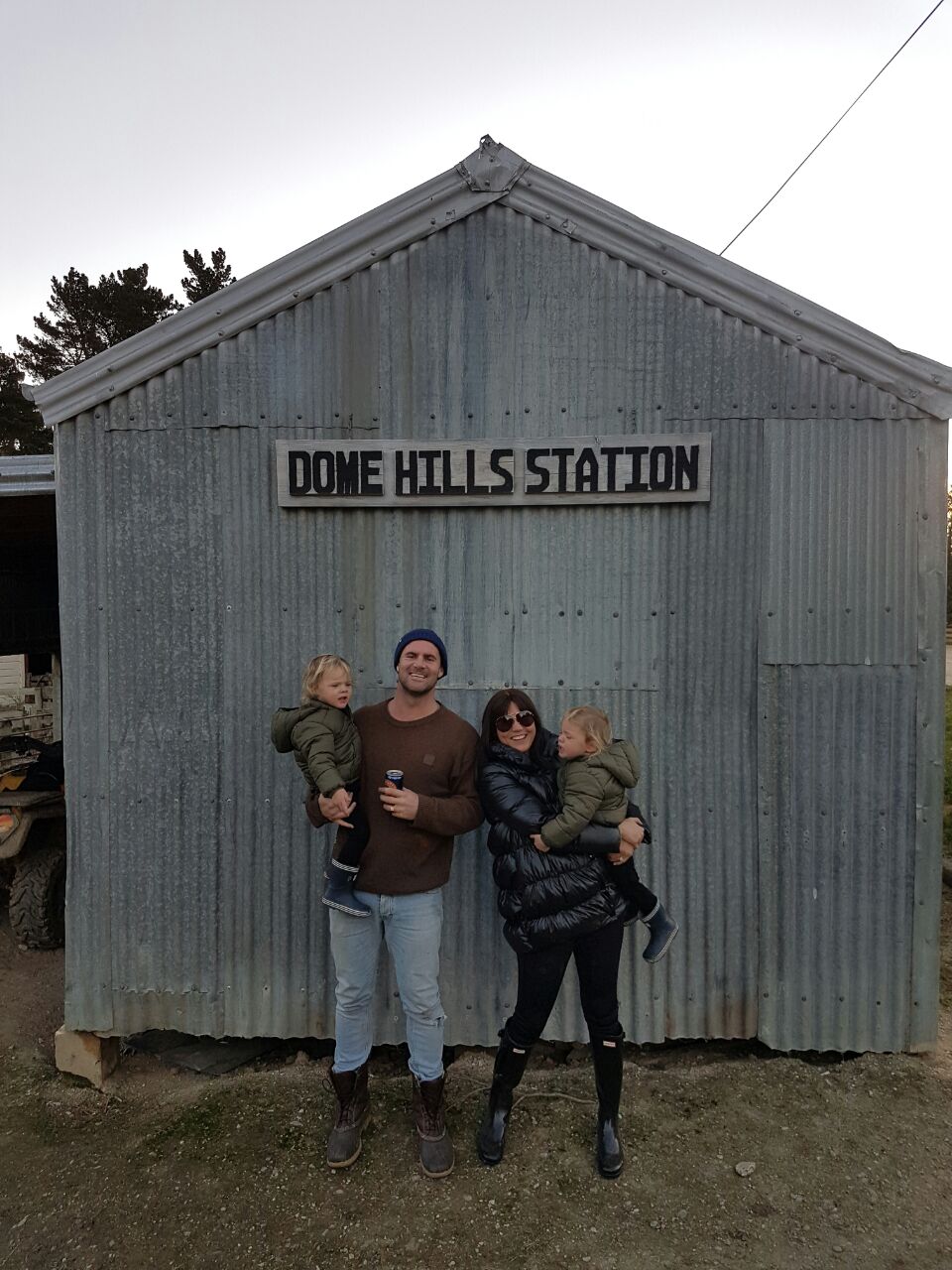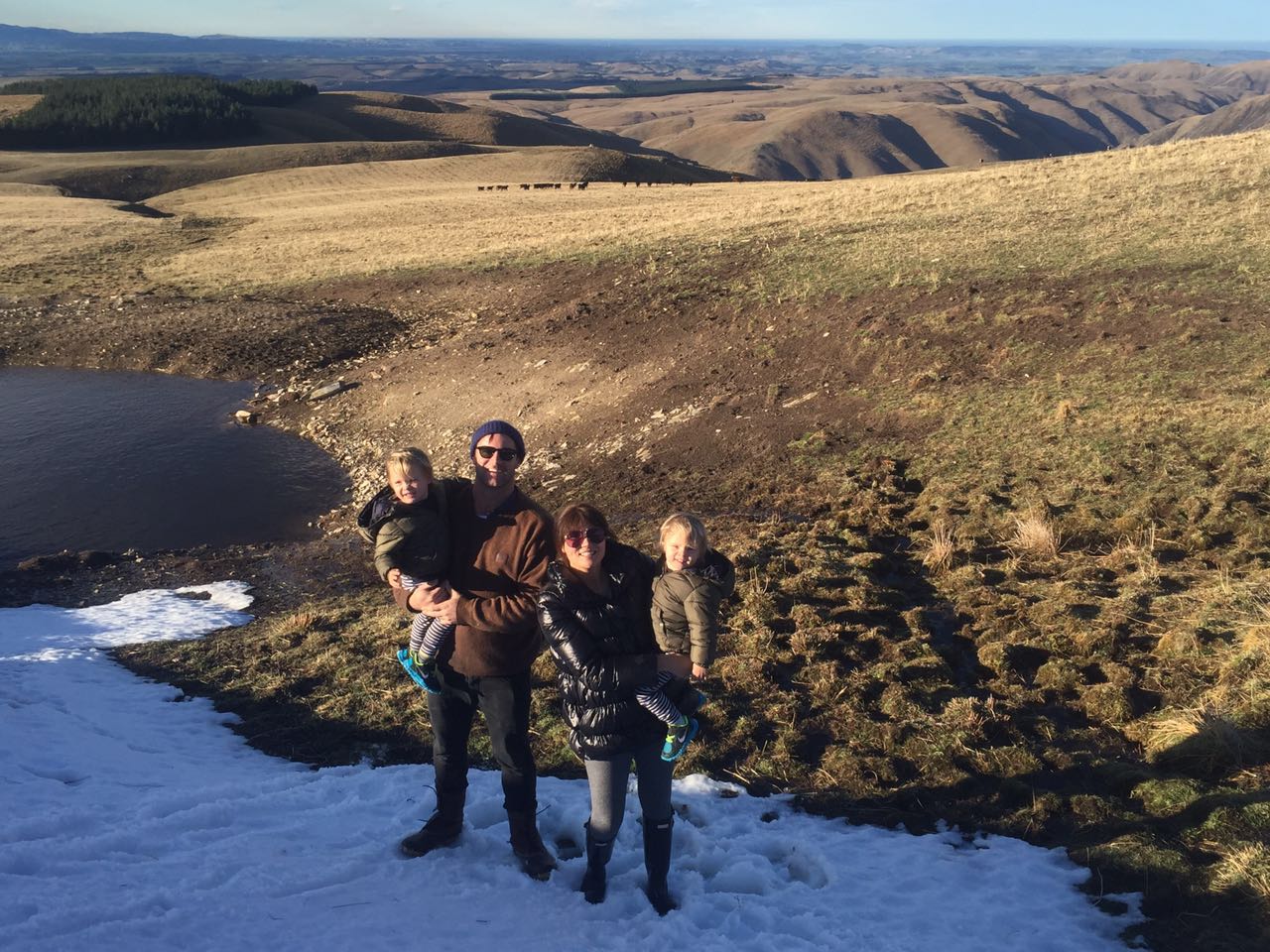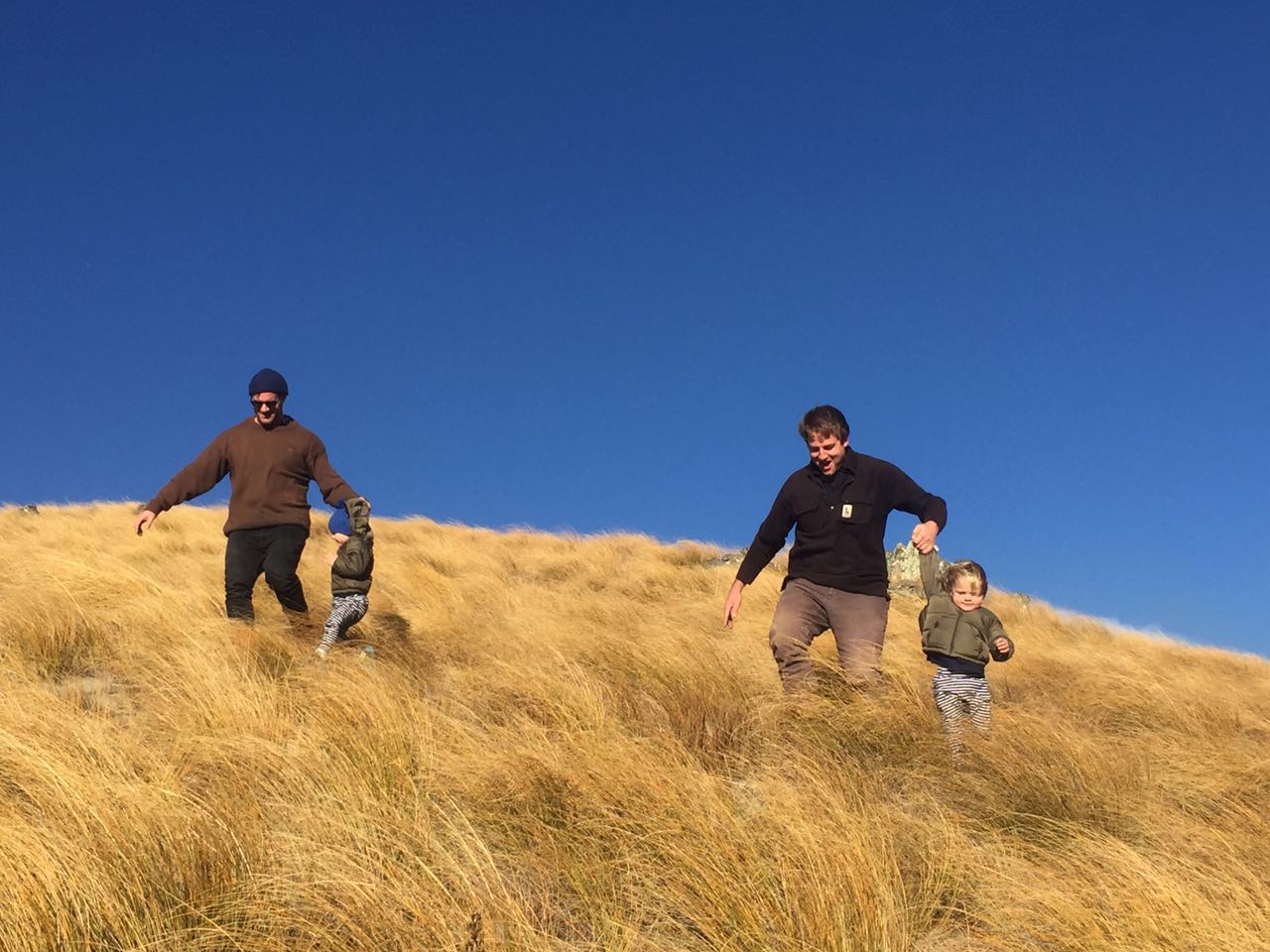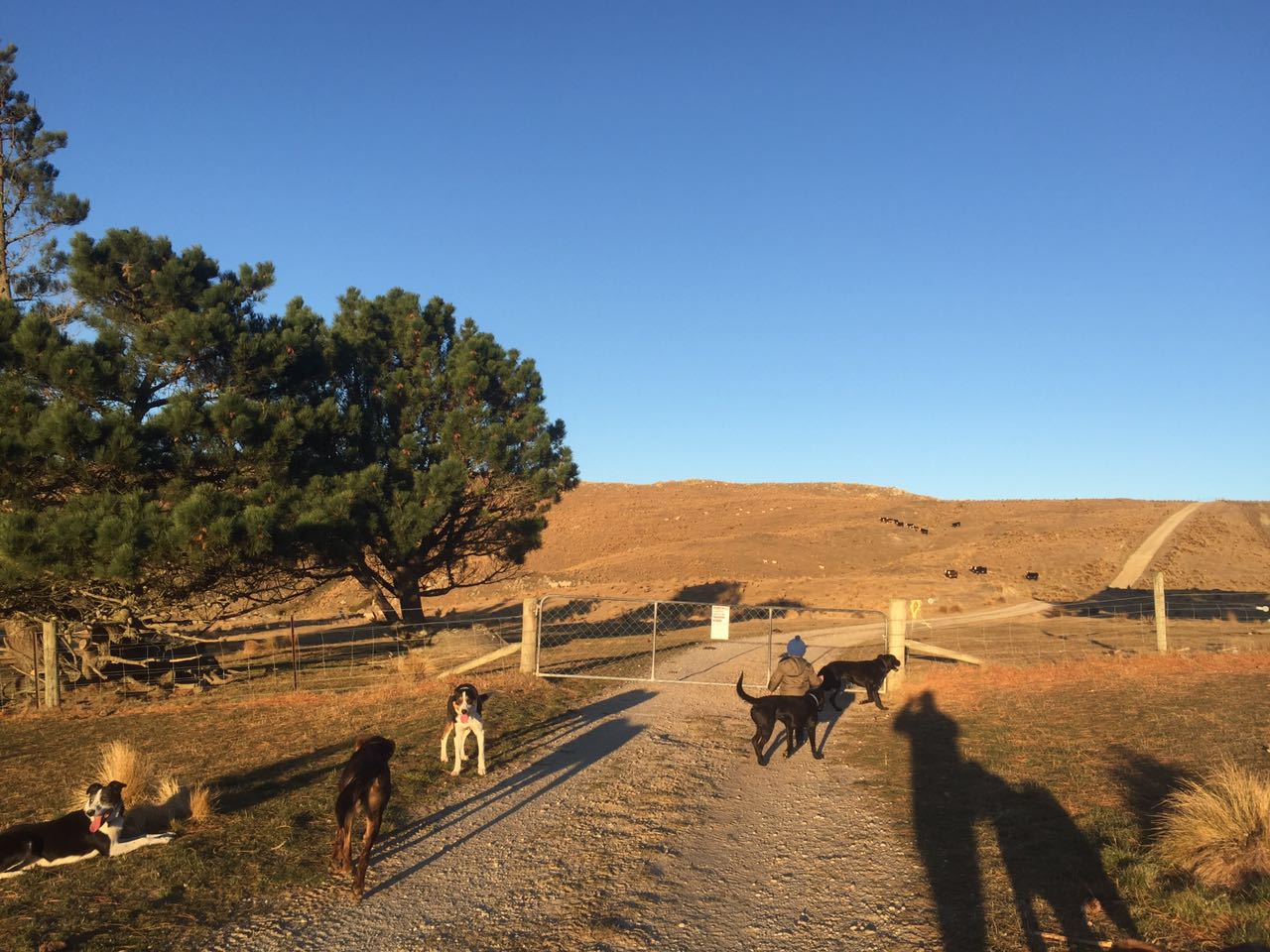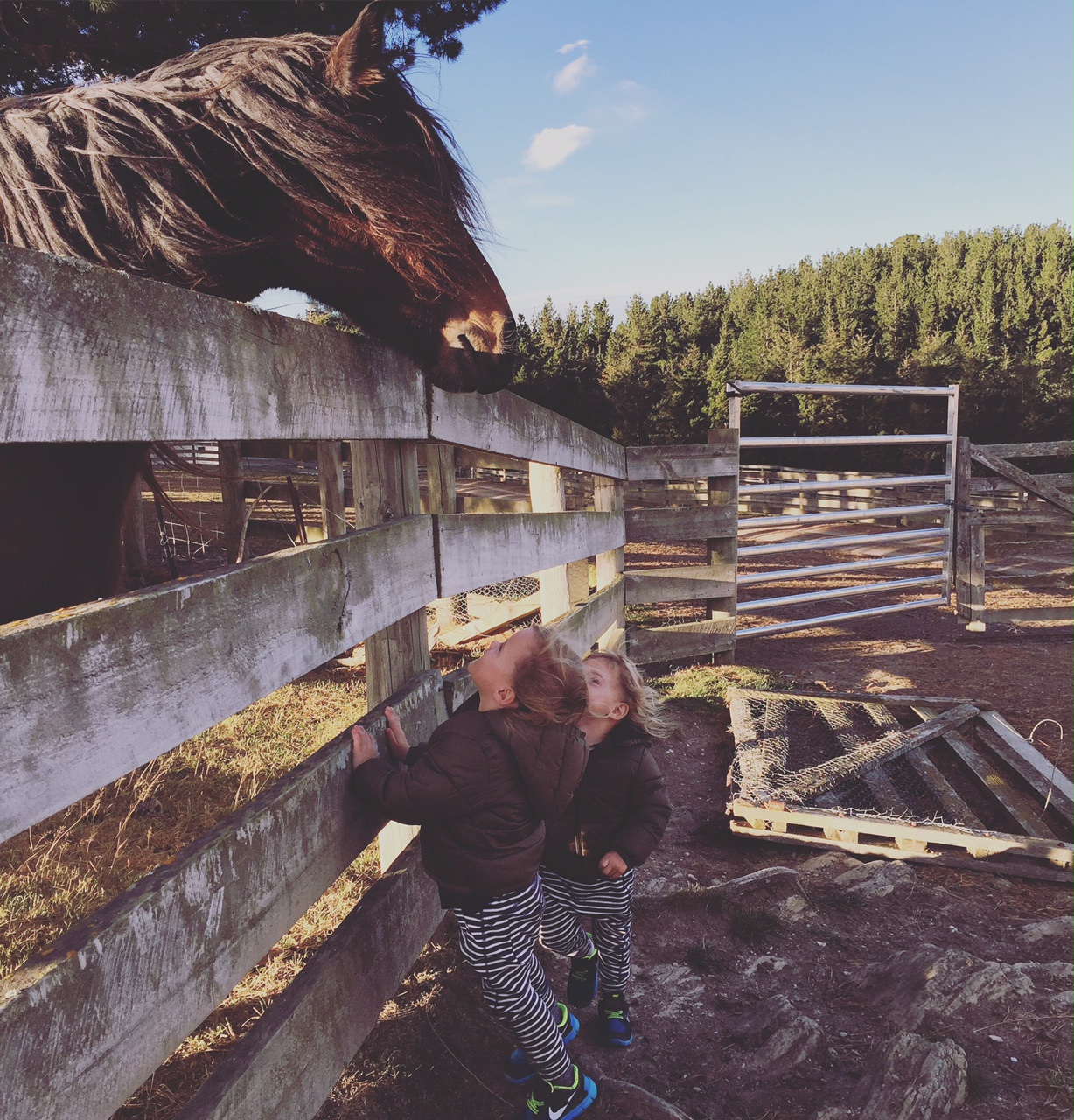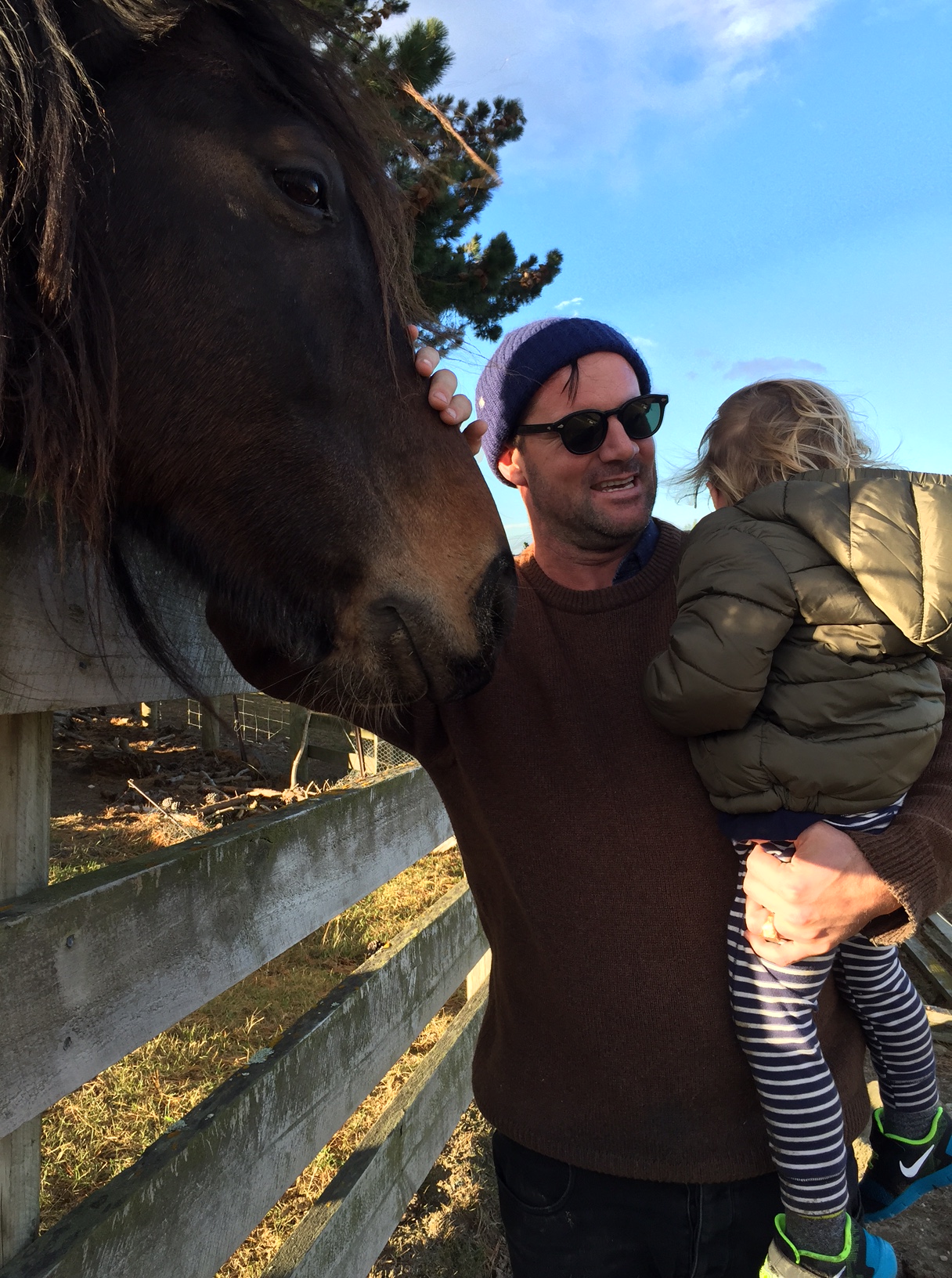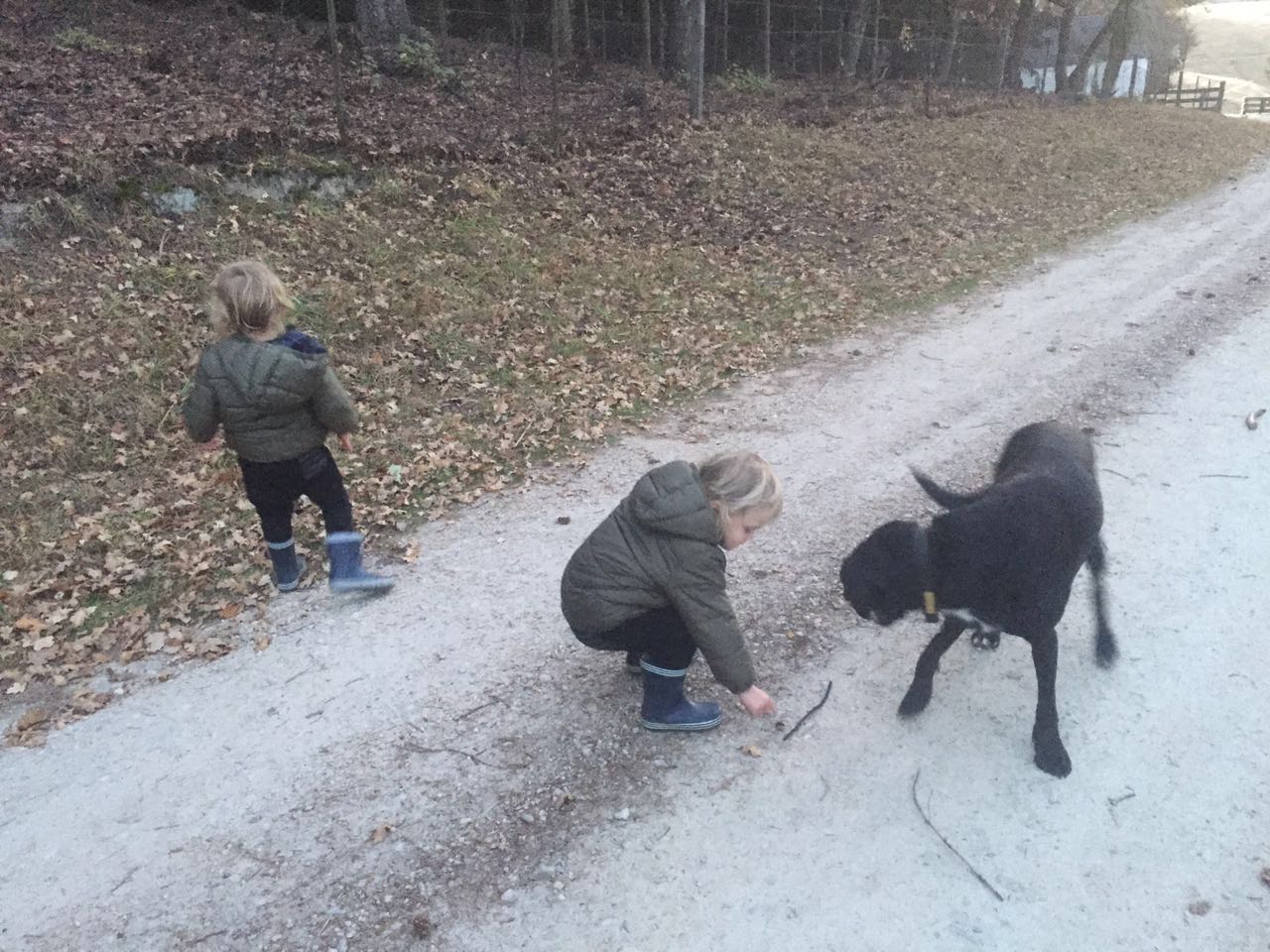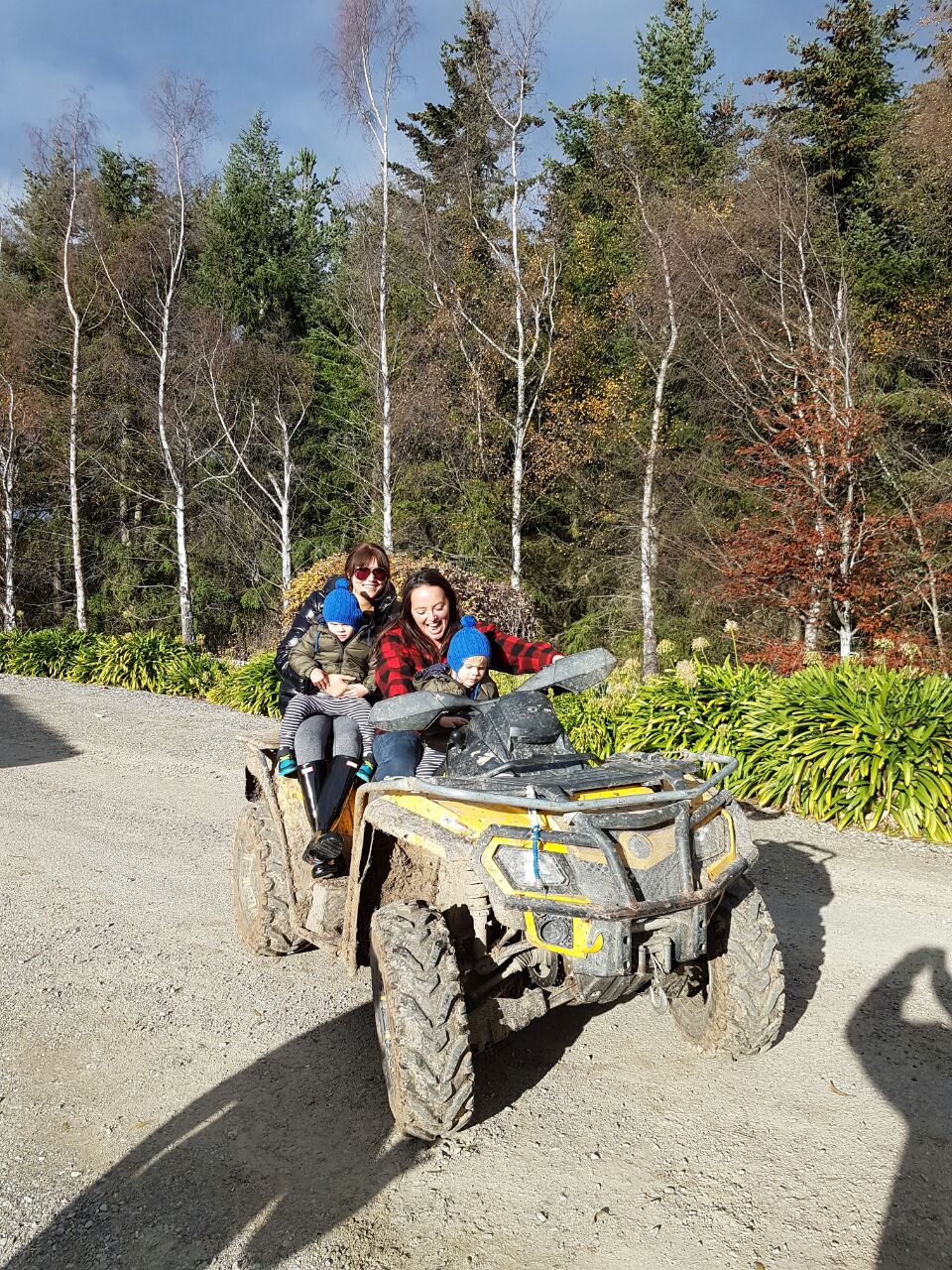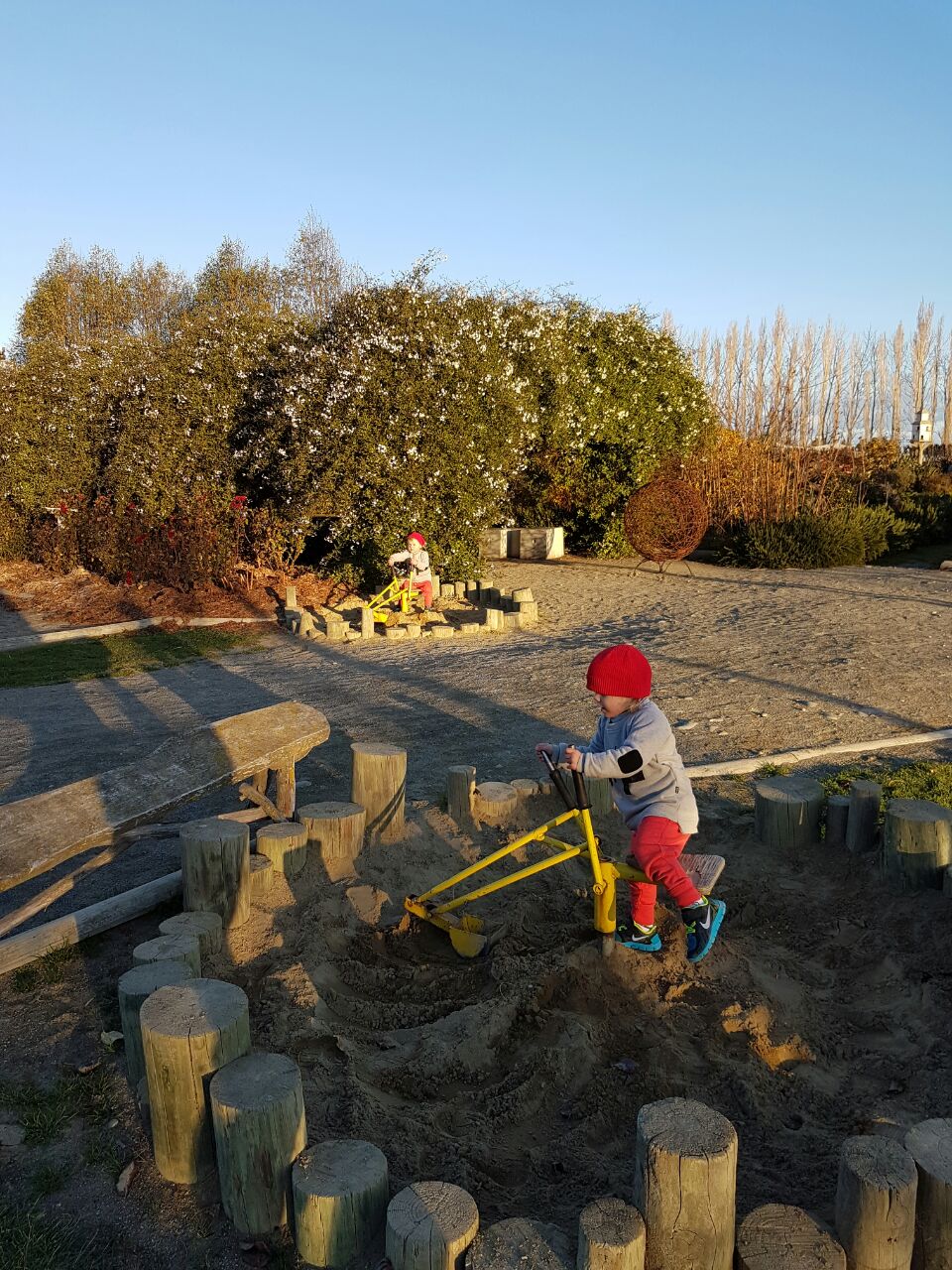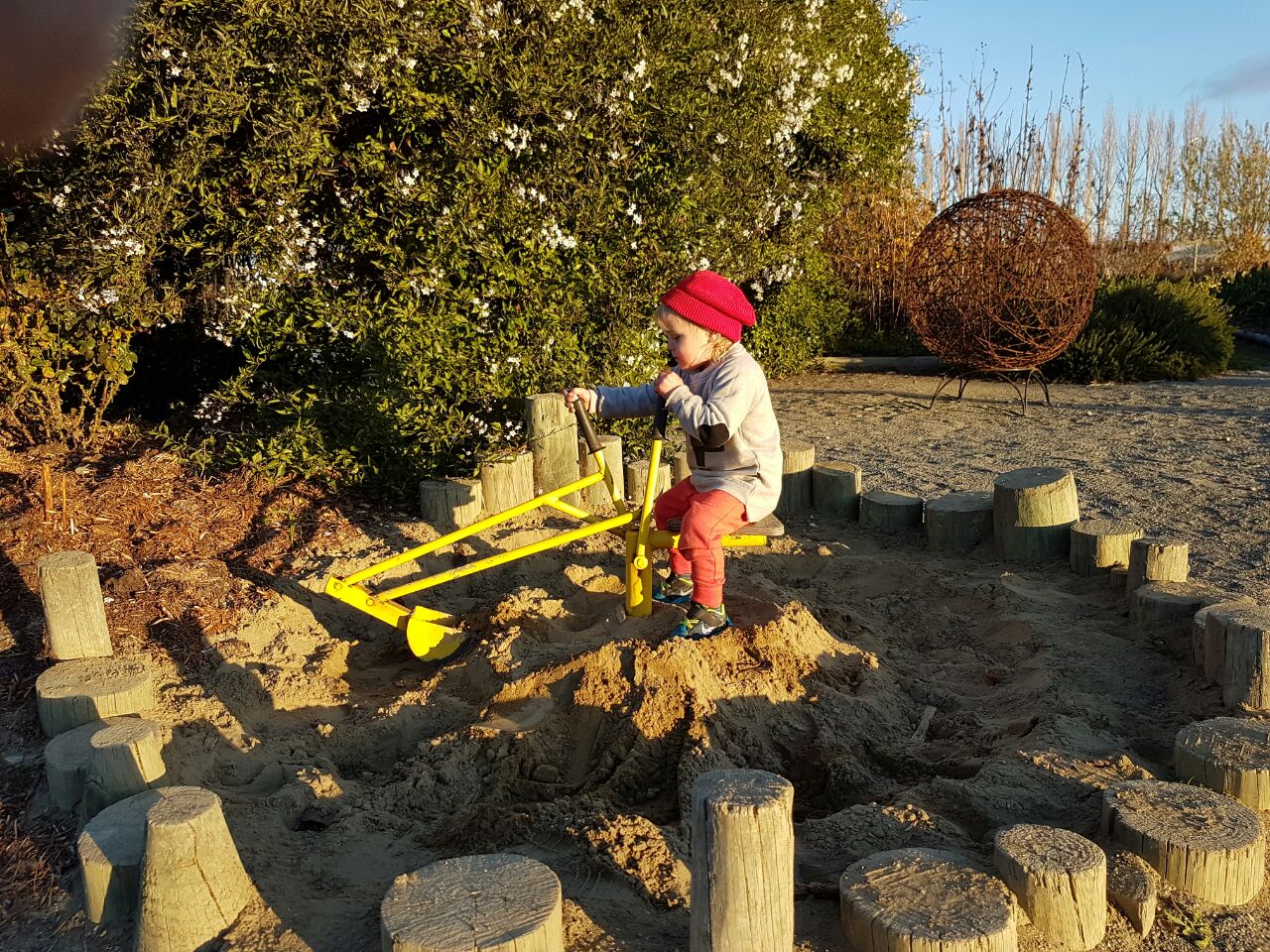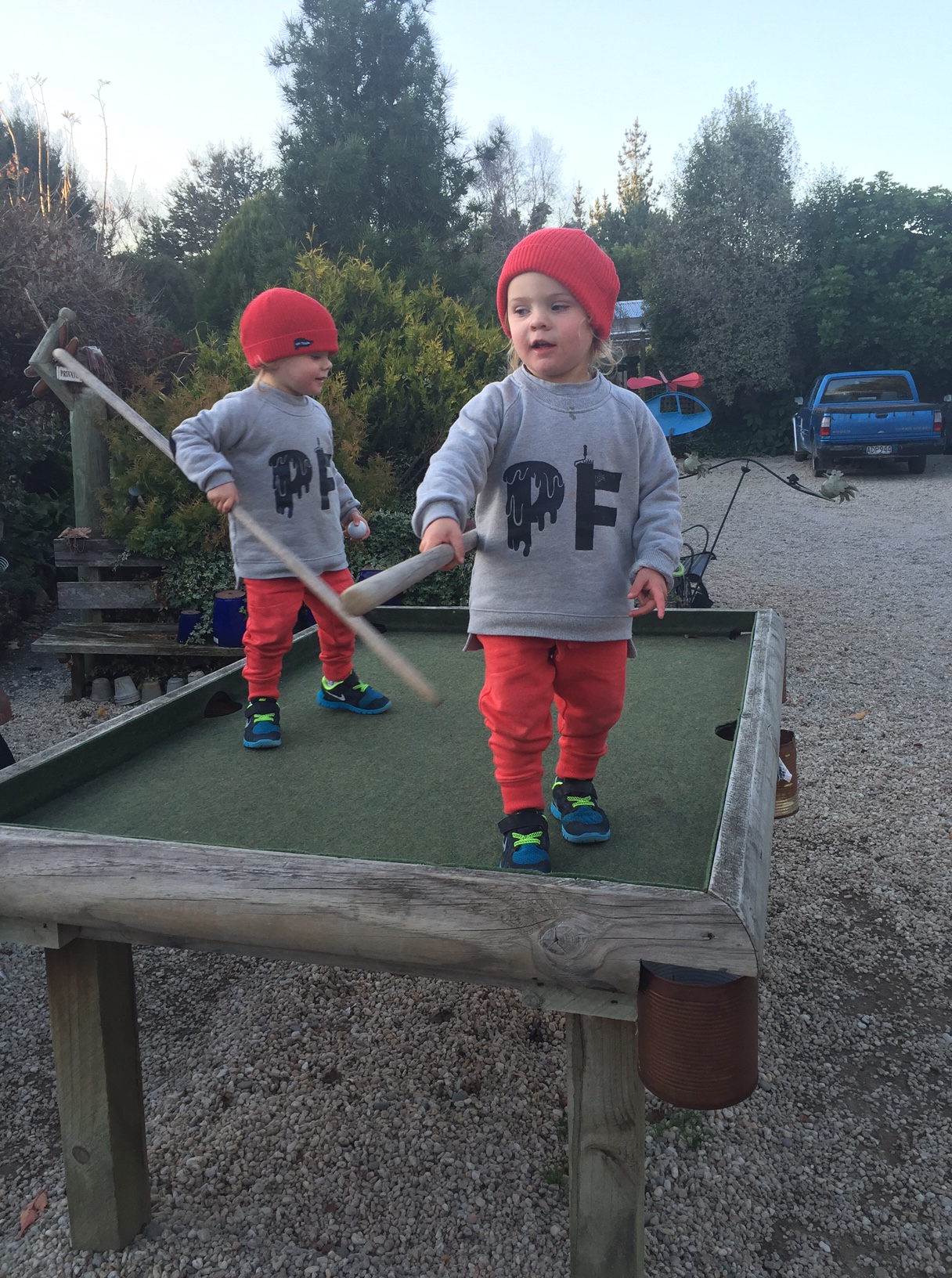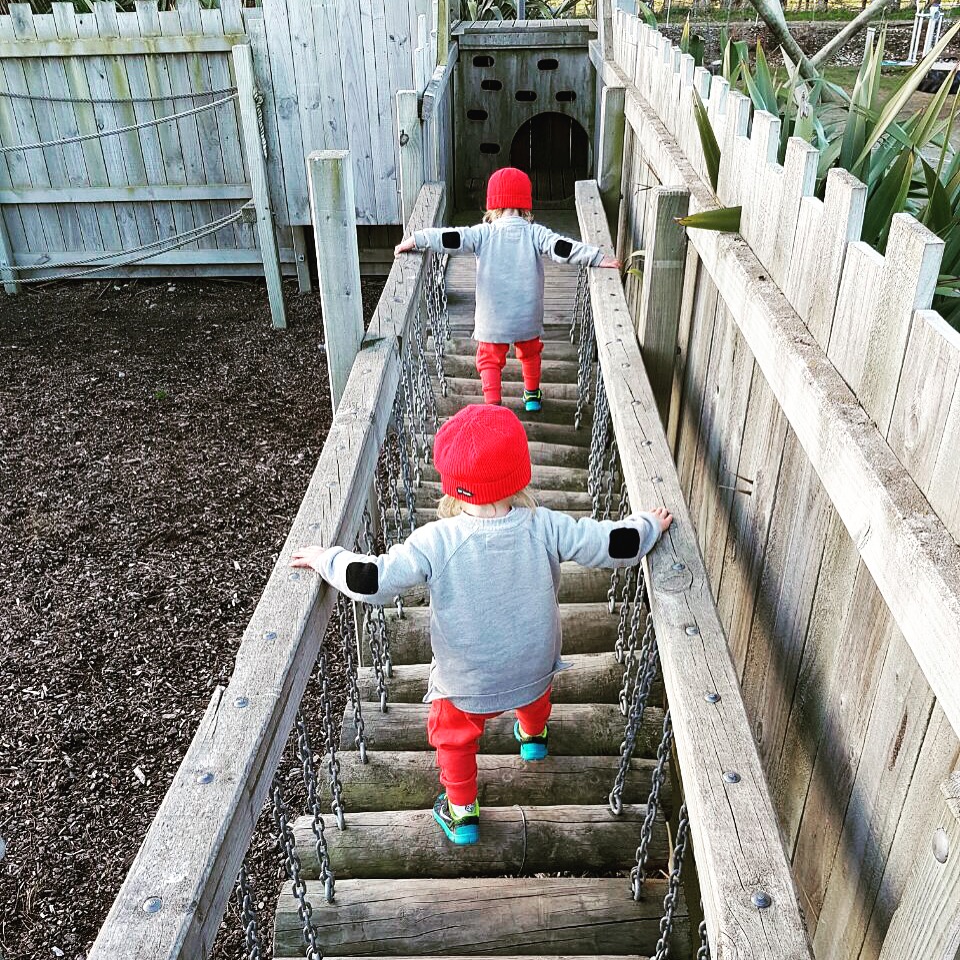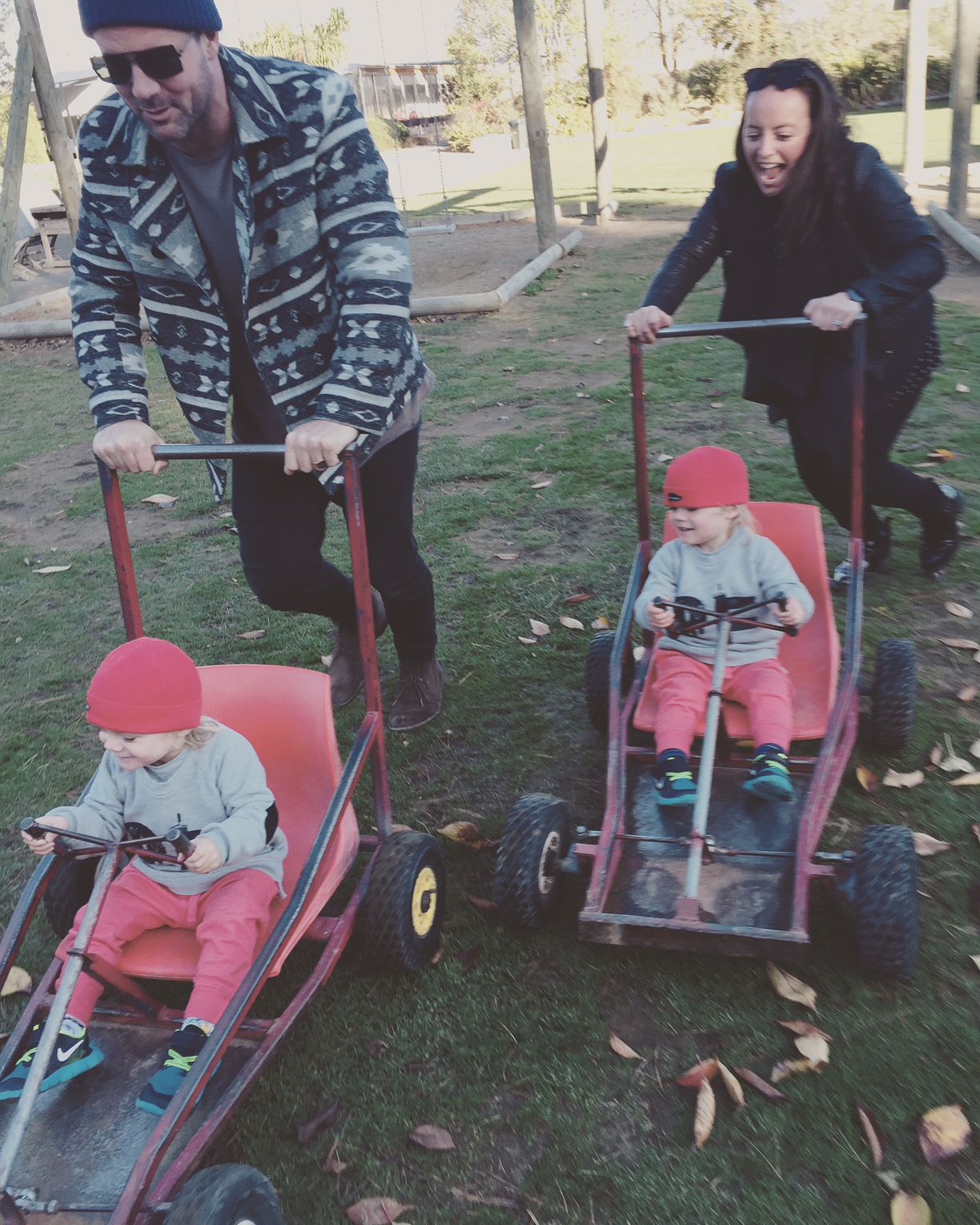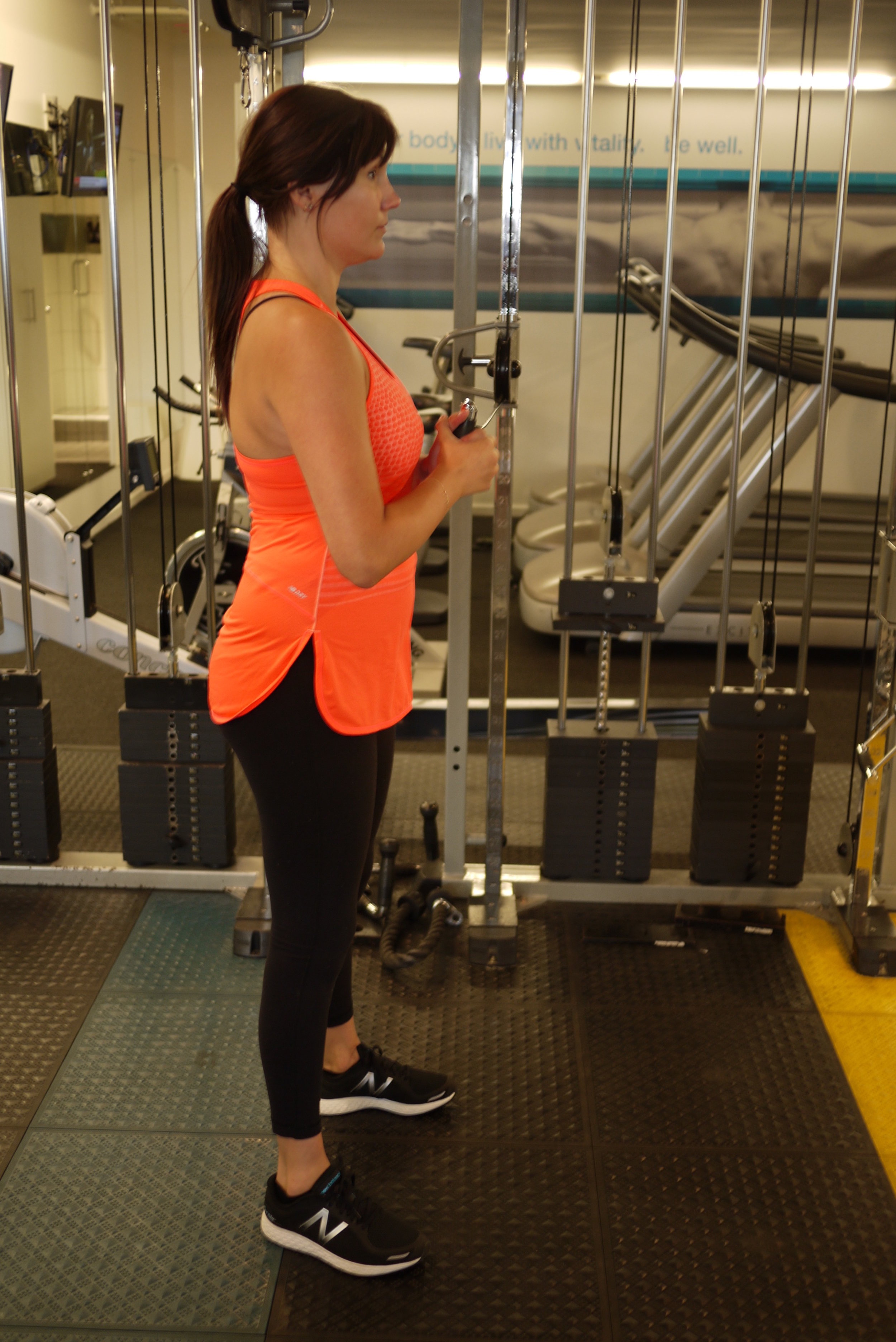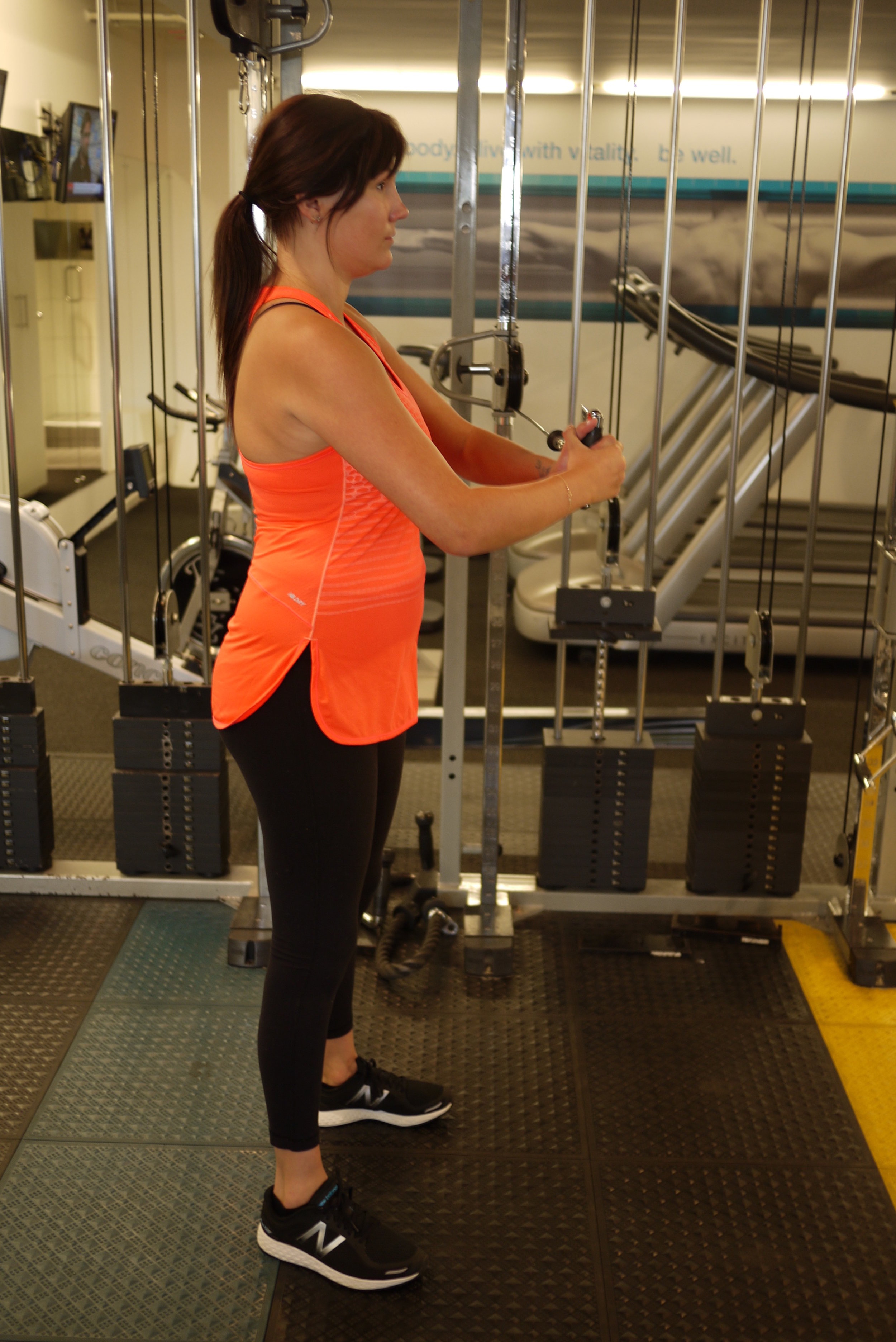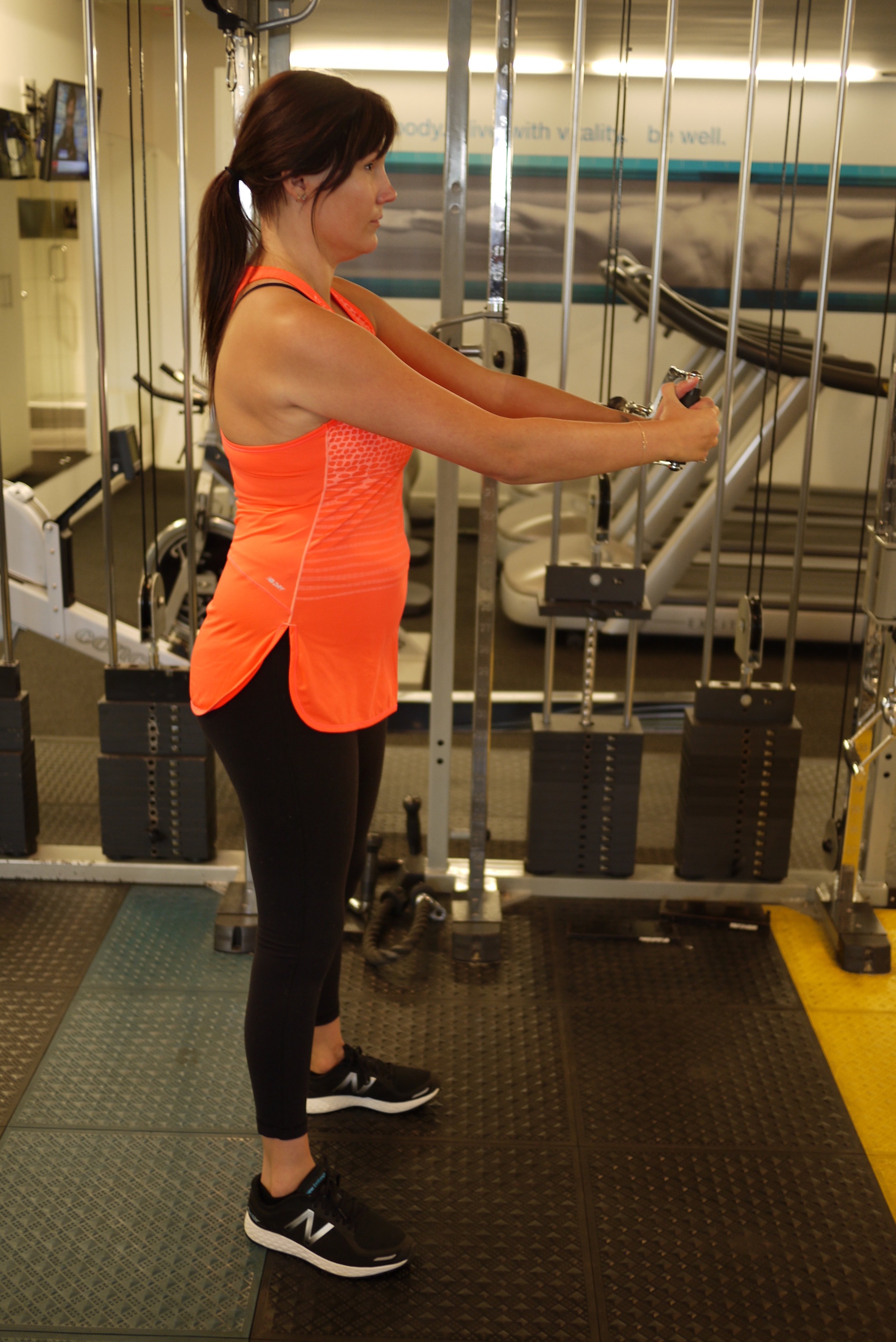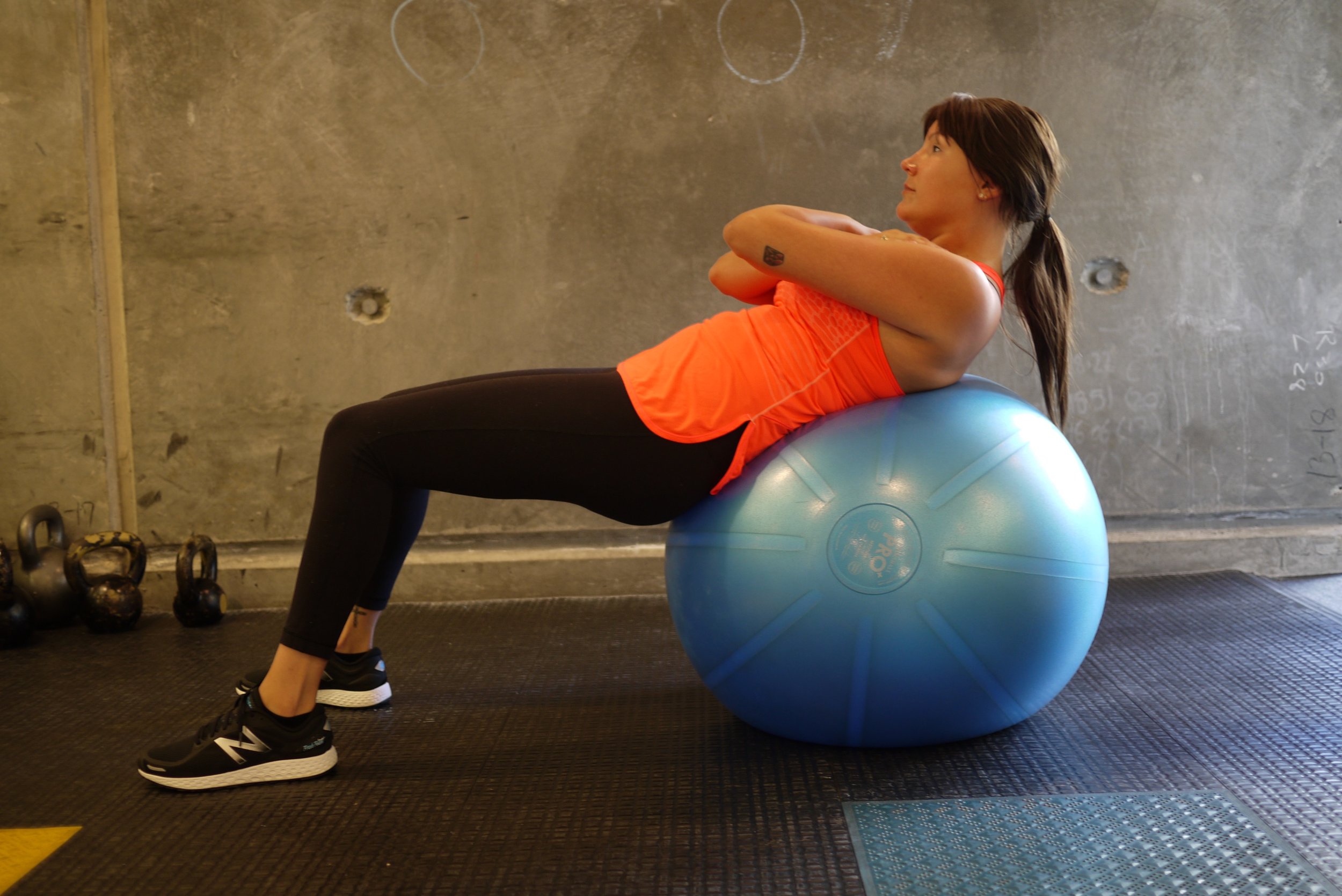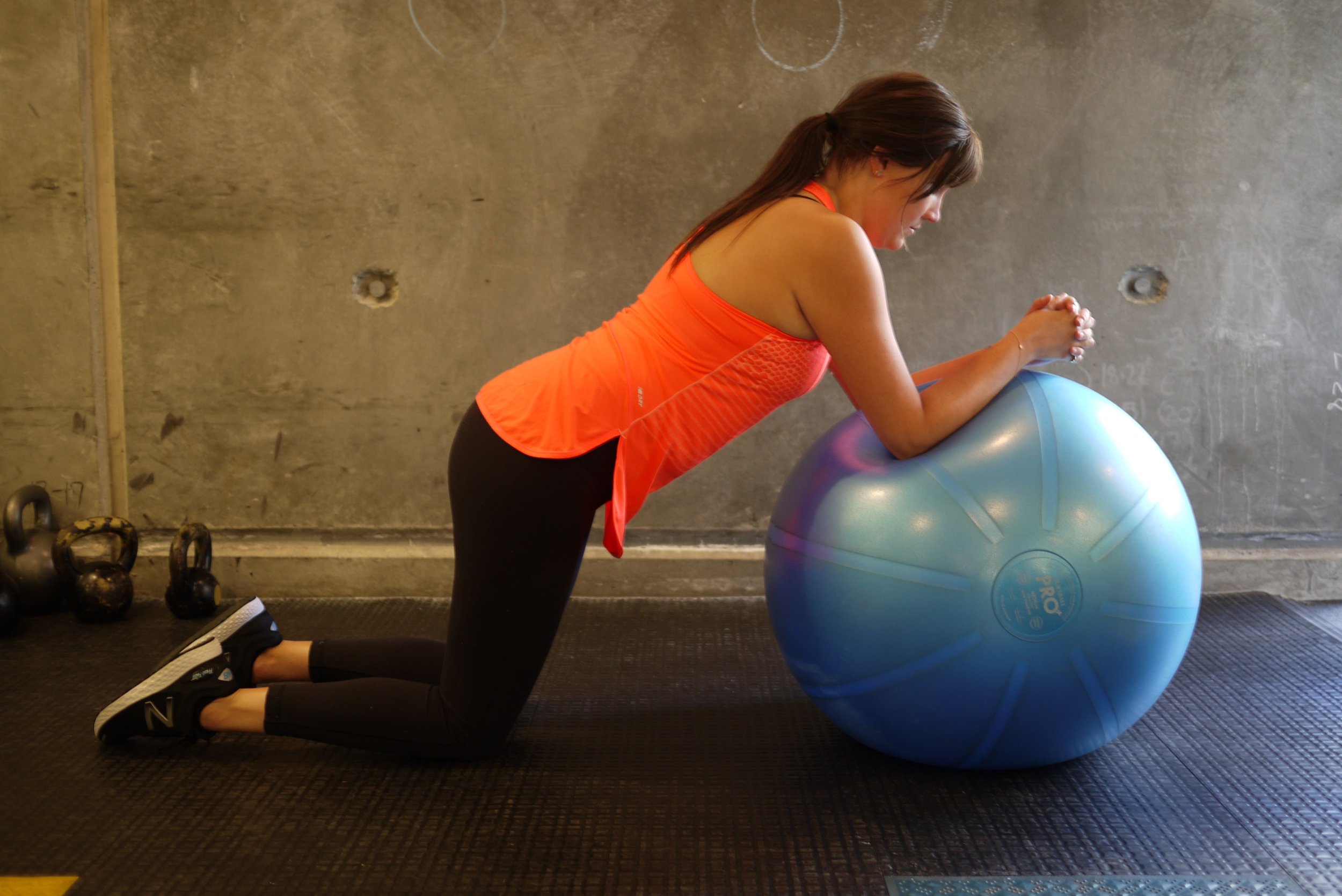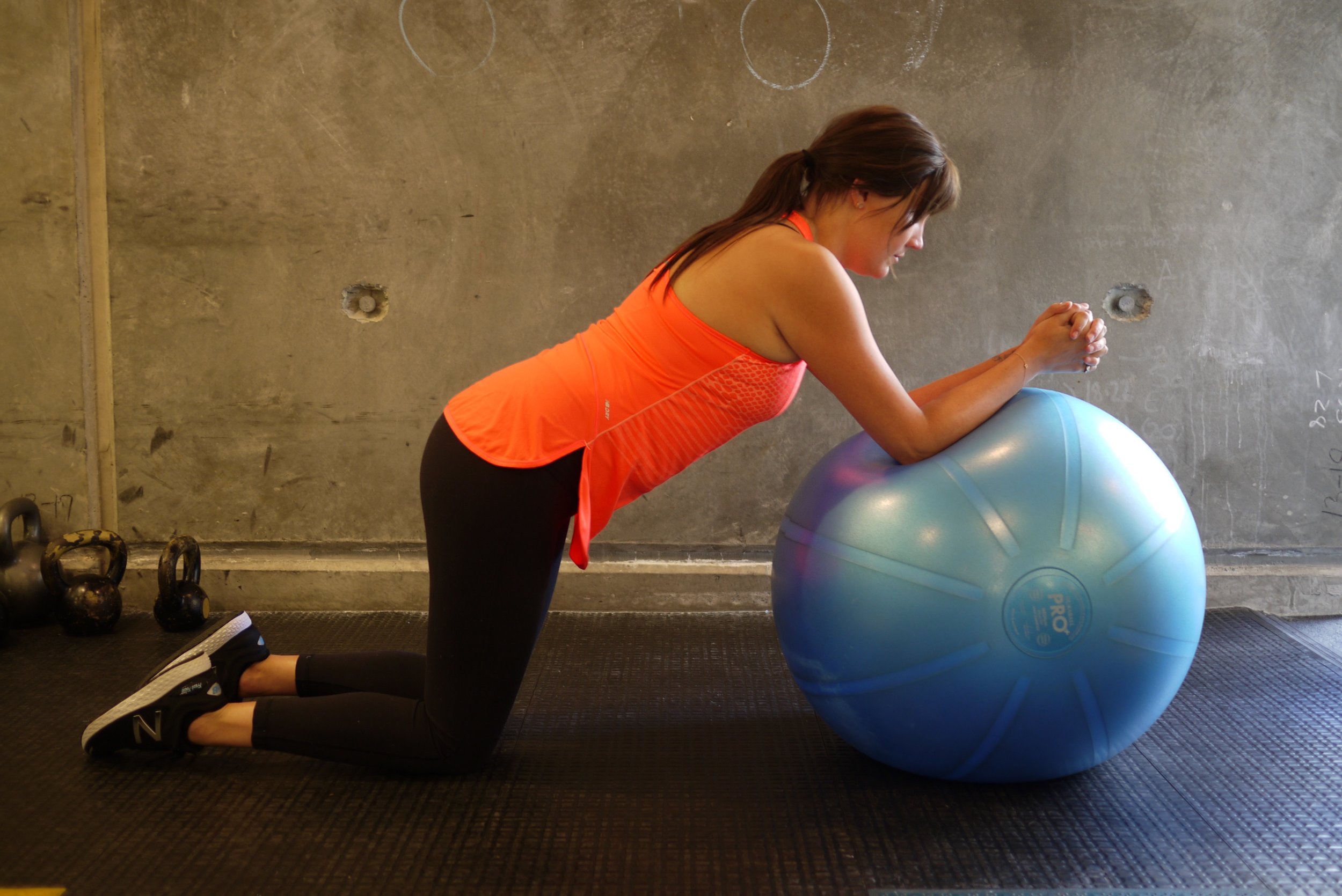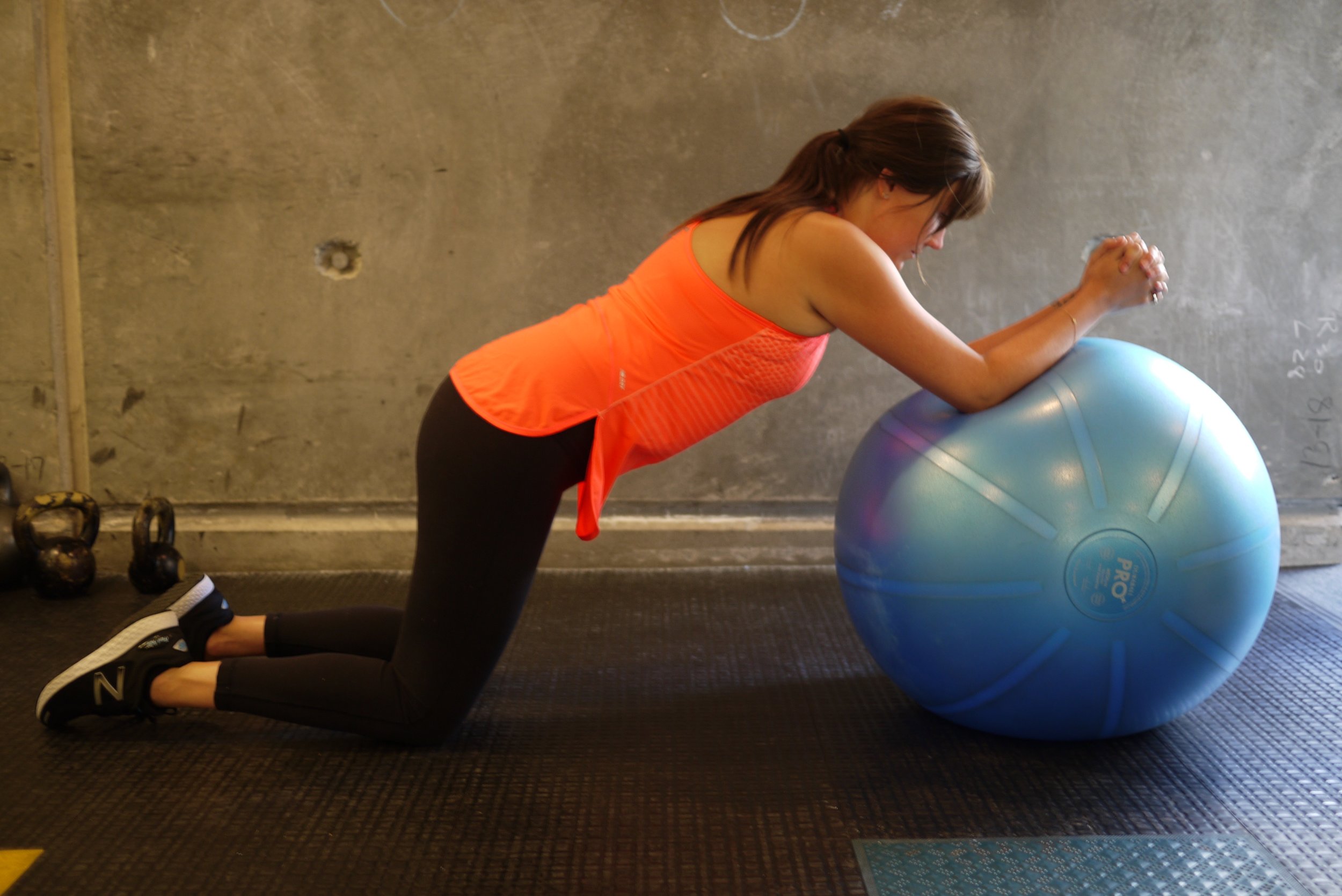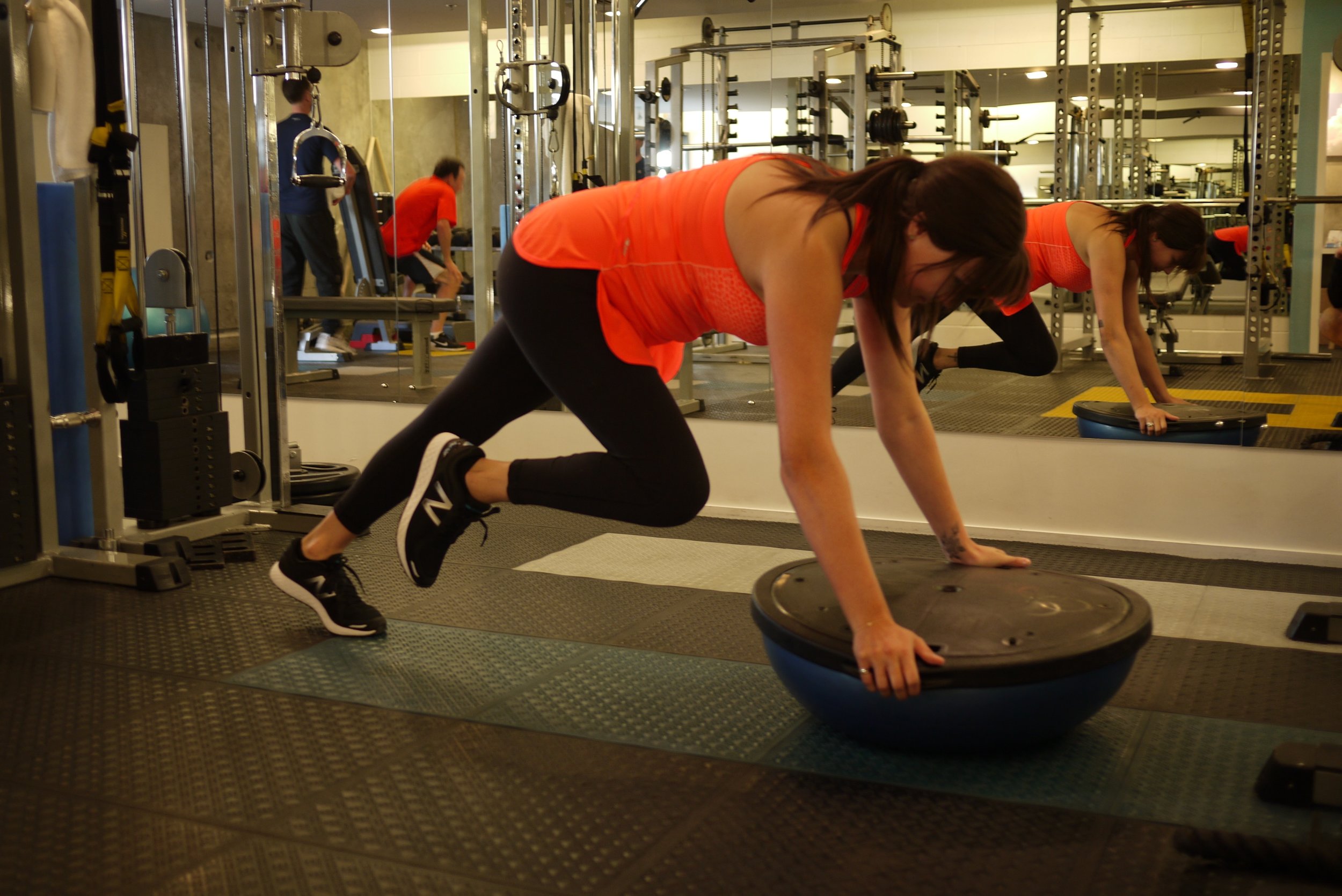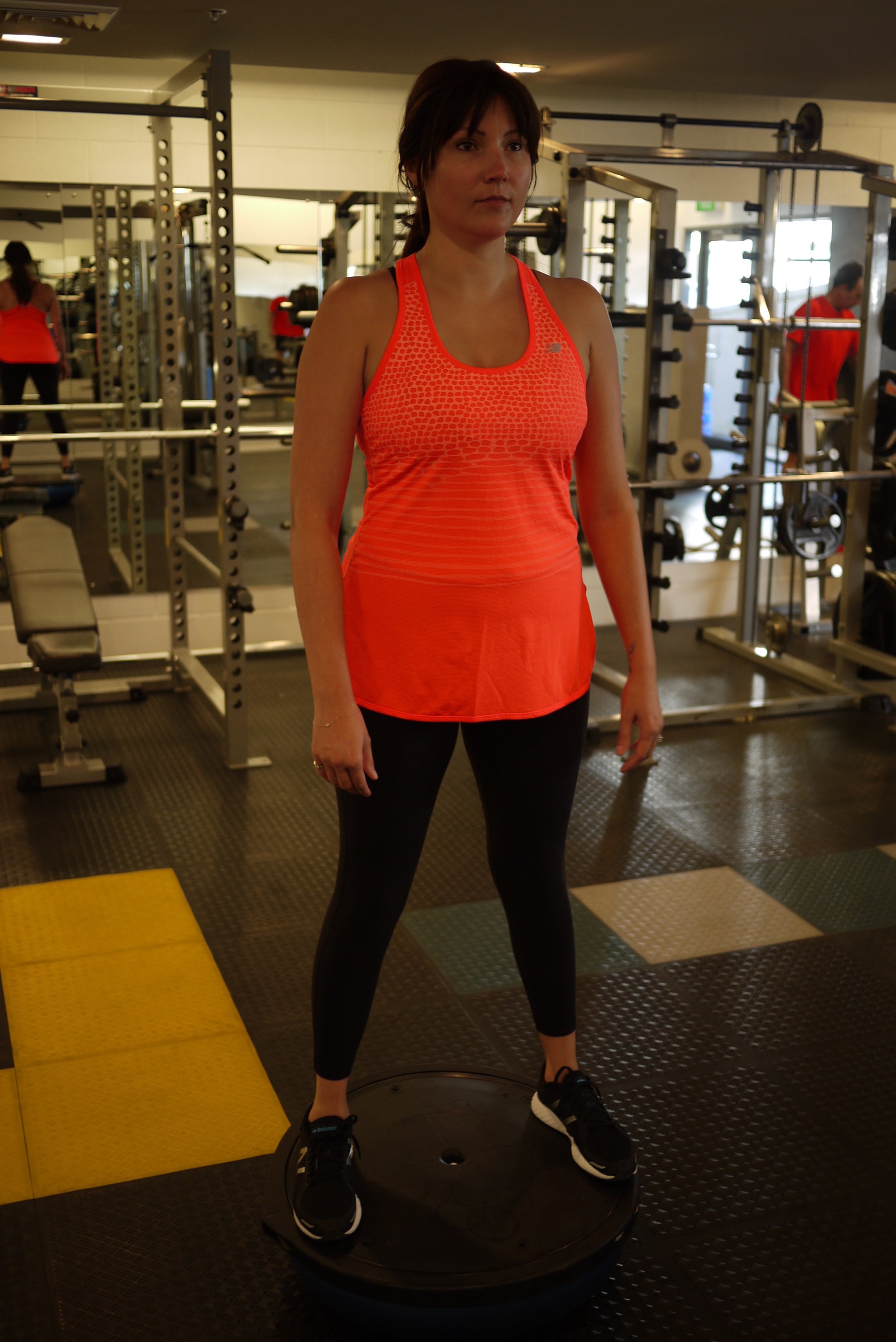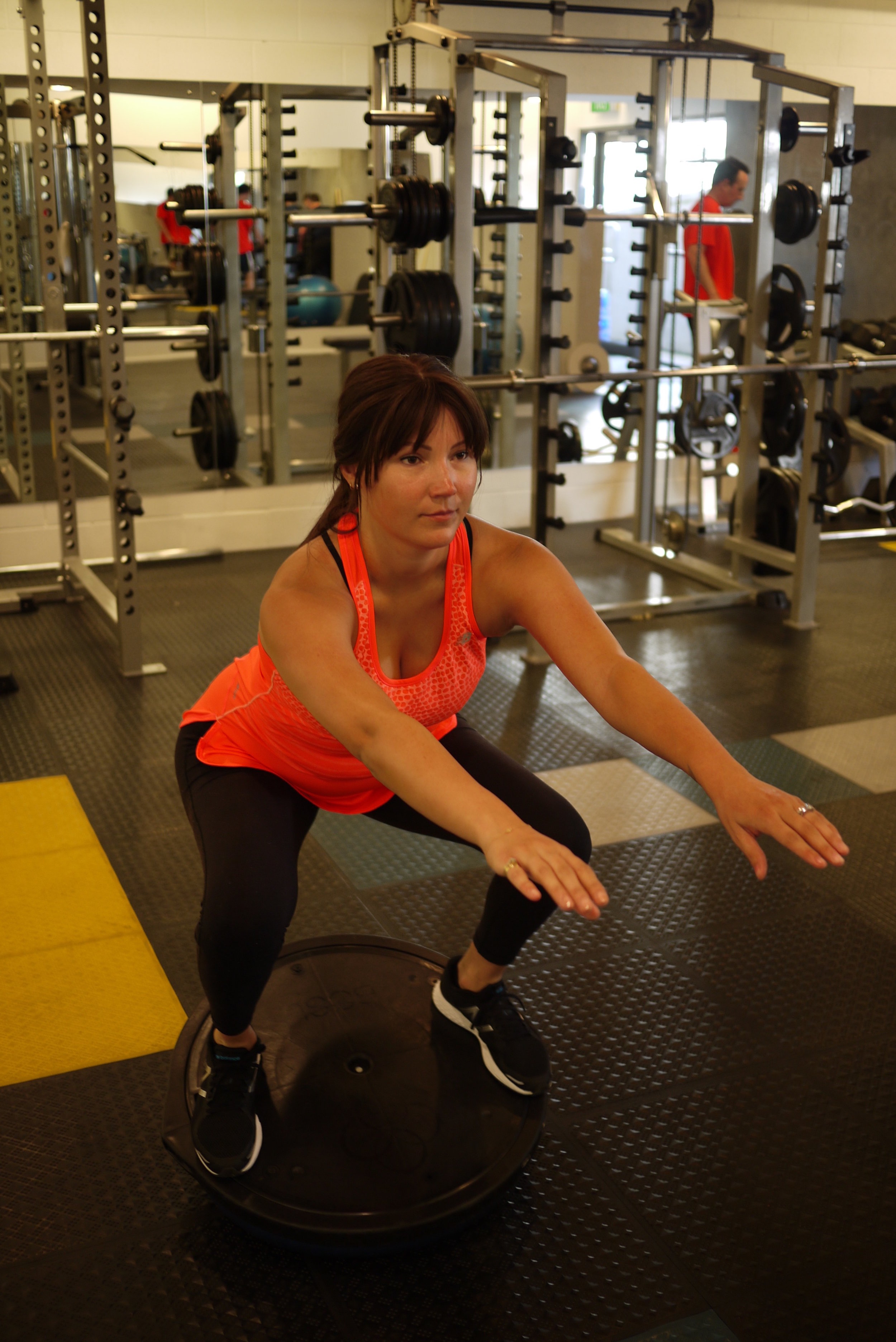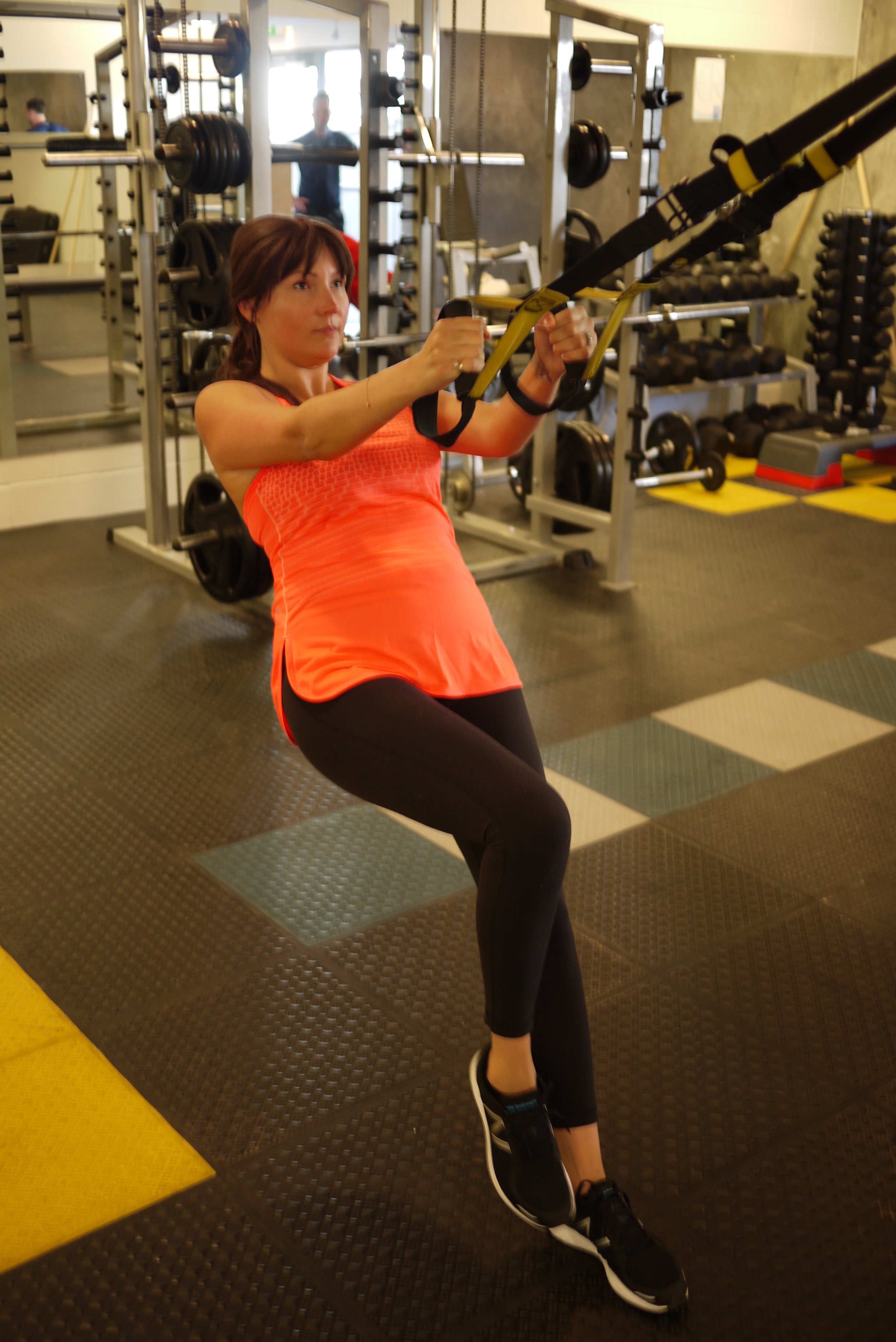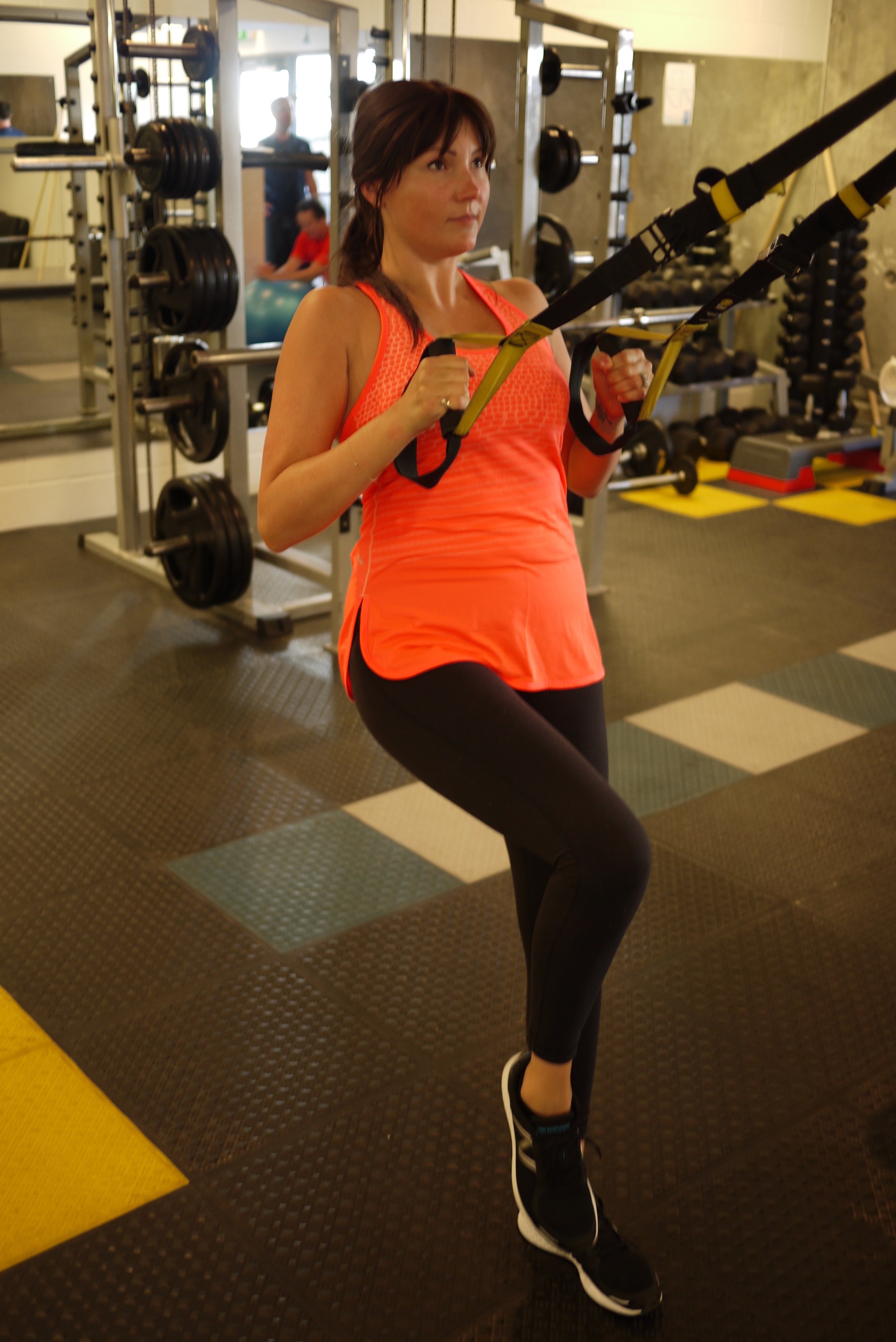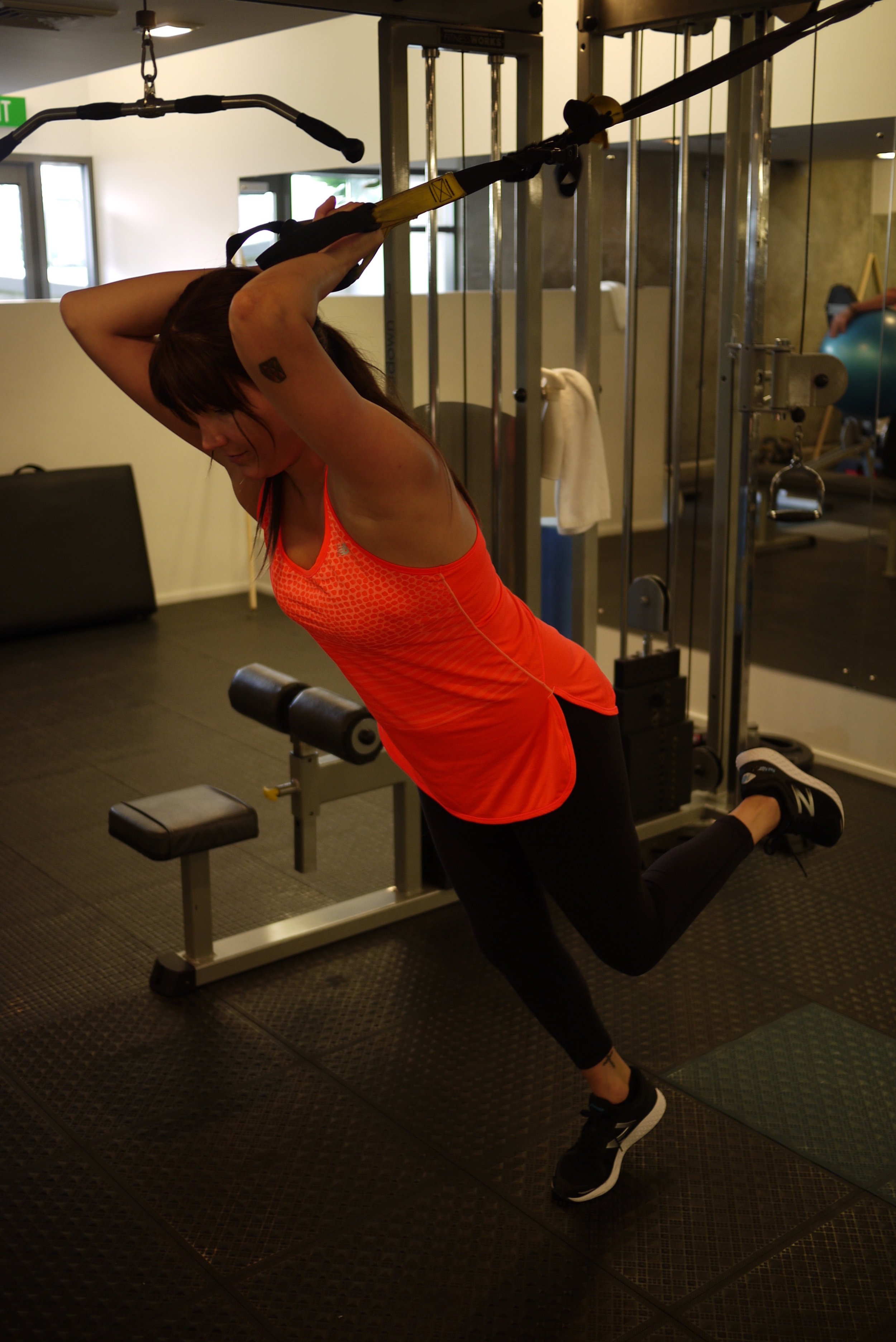You fall pregnant, GREAT, you deliver a healthy little baby (or babies), even BETTER! But once you start to "get back to normal" something isn't quite right...you have that dreaded muscle separation in your abdomen, NOT great!
I had a 3 finger "gap", as I like to call it, after the birth of the Nuggets and over a 6 month period managed to pretty much close it entirely. I worked with an amazing Physio and PT to do this as I wasn't quite game to tackle it myself. I know not everyone has the luxury to be able to do the same thing; so I spoke with both of them and they have put together some exercises you can do at home or in the gym to start closing that gap. Part one: Everything you want to know and more on muscle separation and some home friendly exercises.
Stacy from re:ab is my amazing physio and pilates instructor, she specialises in women's health. So this is her jam, she is an absolute expert and incredibly passionate about this topic. So I thought it best she explain all this stuff as I would have no idea what I was talking about.
I asked her to put together a few exercises that you can do at home to start conditioning your abdominal muscles in a very gentle way. Stacy is all about slow and steady. Some of these moves aren't exactly targeting your abdomen, but they are all important in the wider approach to healing.
So from the expert herself; Stacy Law
DRA – The what, why, how – and the solution.
Diastasis Recti (DRA) often occurs during pregnancy, particularly in the 3rd trimester – but it can also occur through inappropriate abdominal activation over time.
DRA is a separation of the two sides of your Rectus Abdominus muscle or your “6 pack” muscle. The two sides are joined together by a length of connective tissue called the Linea Alba. Due to the force put on the abdominals by a growing baby and pregnancy hormones that work to soften connective tissue, the Linea Alba can weaken and stretch apart or widen. If the Linea Alba has had too much stress placed on it, it will struggle to generate tension – and that’s where we run in to problems.
For a lot of women this gap will close naturally in the first few weeks post birth, as the uterus shrinks back to normal size and swelling subsides. But for some it is more problematic, and they will require a targeted programme to heal their DRA. It’s important that you address your DRA, as it can be linked to a number of other problems - back and hip pain, pelvic floor problems, hernia and that unwanted abdominal pouch!
We assess DRA by looking at the length, depth and width of the separation, but also, and most importantly, your ability to generate tension across that gap. Women often get really focused on the width – and while that is important to know, and keep an eye on, it’s also good to remember that it may not close completely. The way you are activating your core is the key and you can be fully functional with a small and well controlled DRA.
A little disclaimer before we go through some exercises . . .
Correct Activation
The most important thing with DRA, is making sure you can activate the core correctly and that you aren’t bulging out or doming up the two side of your abdominals.
This starts with the knowledge that by “core” we don’t just mean your abdominals. You have 4 main core stability muscles – and all are significantly effected by pregnancy. It can help to think of the core like a cylinder inside your abdominal cavity, with your Diaphragm (your main breathing muscle) at the top, abdominals at the front, pelvic floor on the bottom and your deep spinal extensors (Multifidus) at the back. A balanced and coordinated action of all the muscles that support your centre is required for good control. One of the hardest things to get back post pregnancy is that connection between them, so make sure that you spend some time focusing on it.
What we do know is that many women don’t activate their core correctly – they often end up bracing their abs and bearing down on the pelvic floor. This increases your intraabdominal pressure and the weakened structures will struggle to work against that. I hate saying it, as we are all about getting women back in to exercise - but doing your core exercises incorrectly can in some cases end up being worse than doing nothing at all!
The Exercises
These are some entry level exercises. They are designed to help you reconnect with your core and start you out on the road back to full strength and function.
ACTIVATION (Pelvic Floor and Lower Abs)
- Lie on your back or side with your knees bent, hands on hips, fingertips just inside your hipbones. You should be in a neutral spine*
- Take a deep breath in through your nose, feel the breath expand in to your ribcage and belly
- As you breathe out, gently draw up your pelvic floor muscles and engage lower abdominals – there are a few ways to think about this, find the one that works best for you.
Imagine:
- Your pelvic floor is a silk hankie that you are drawing up gently inside you,
- Feel that you are trying to lift a tampon up inside to stop it from falling out
- Feel that you’re zipping up a tight pair of jeans and then doing up the button
Hold for 2 - 3 seconds and then let it relax. It’s just as important to be able to feel the relax as it is the contraction. Rest between contractions for 5 – 10 seconds.
- Goal is to be able to hold that gentle contraction for 10 x 10 second holds – build up to that slowly.
TECHNIQUE TIP – if you press quite hard inside your hips bones, then as your lift your pelvic floor you should be able to feel some tension being created under your fingertips. This is your lower abdominals activating. When activating your Pelvic Floor muscles, it’s important to think of a lift, rather than a squeeze to ensure that you aren’t bearing down.
Also – keep your bum muscles and your upper body nice and relaxed as you activate.
*Neutral Spine (Neutral Zone) is the point where load is transferred evenly through all of your vertebrae. One of the easiest ways to think about it when you’re lying on your back is that your pubic bone and your hip bones should be level. Basically your lower back should not be too arched, nor should it be flattened in to the ground – find the sweet spot in the middle!
[wpvideo O7189NrG]
BENT KNEE FALL OUT:
Start in your neutral spine* position with your hands just inside your hip bones. Inhale to start. As you exhale, draw up your pelvic floor, engage lower abdominals and gently drop one knee out to the side. Only go as far as you can whilst keeping control of the position of your hips (see photo below of how not to do it). Inhale as you return the knee to centre and repeat with other leg.
Repeat 3 x 10 each side
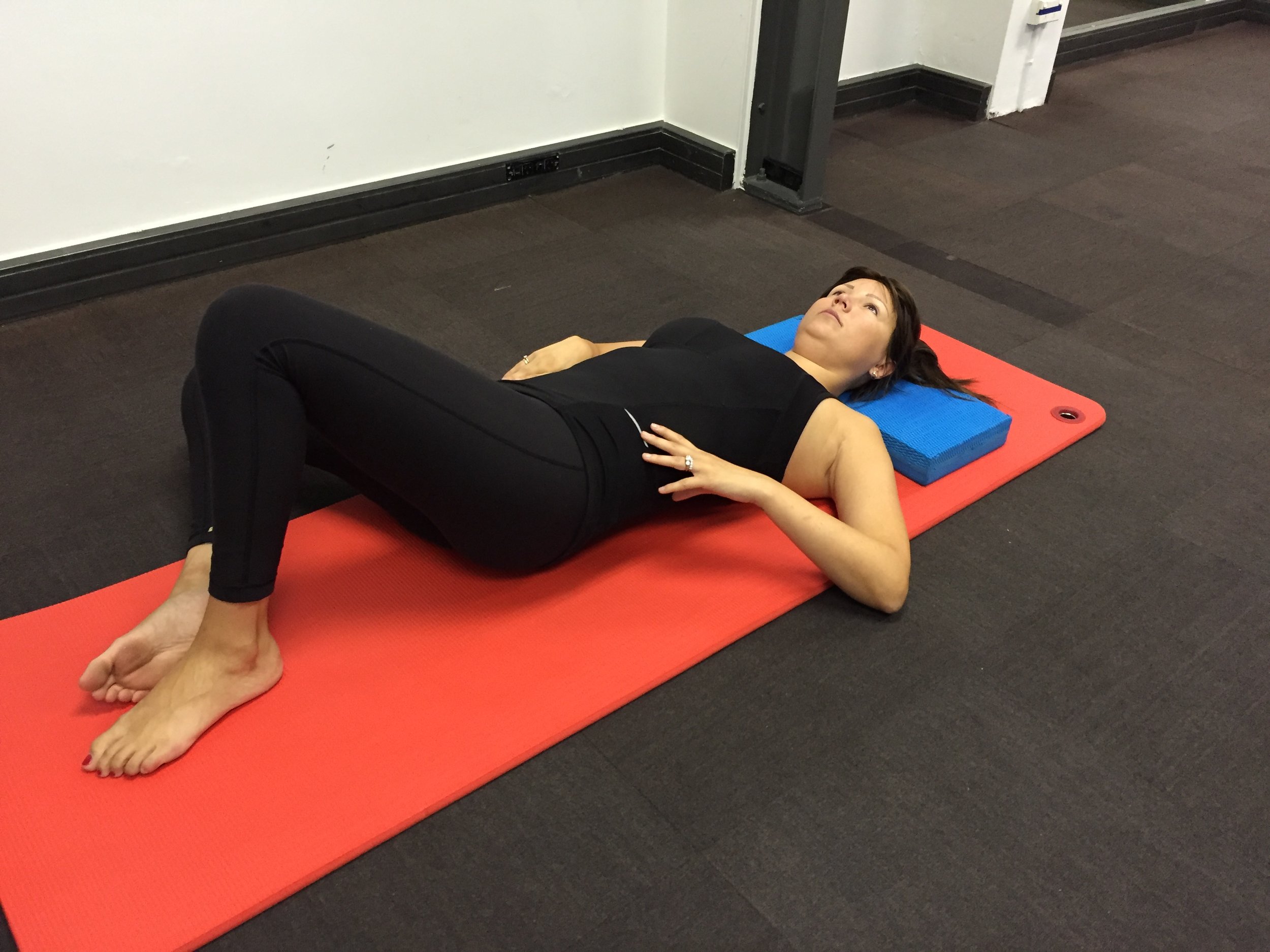
SINGLE LEG SLIDE:
Lie on your back in your neutral spine* position, foot on a small ball if you have one. Inhale to start, as you exhale gently draw up your pelvic floor, engage your abs and slide one leg out straight. Make sure that your back stays still as your leg slides away – and that you keep the distance between your ribs and hips the same. Inhale as you draw your leg back in.
Repeat 3 x 10 each side
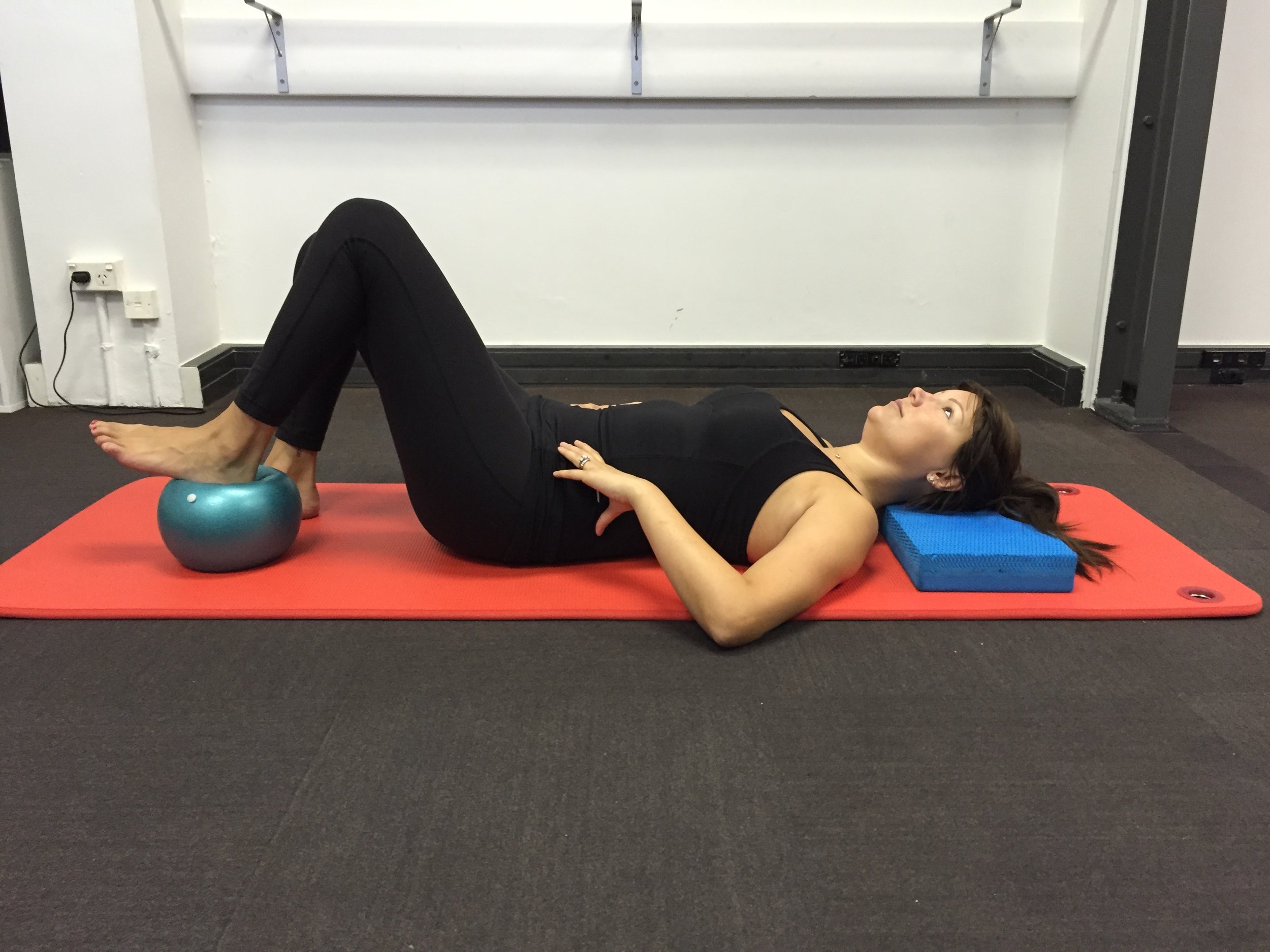
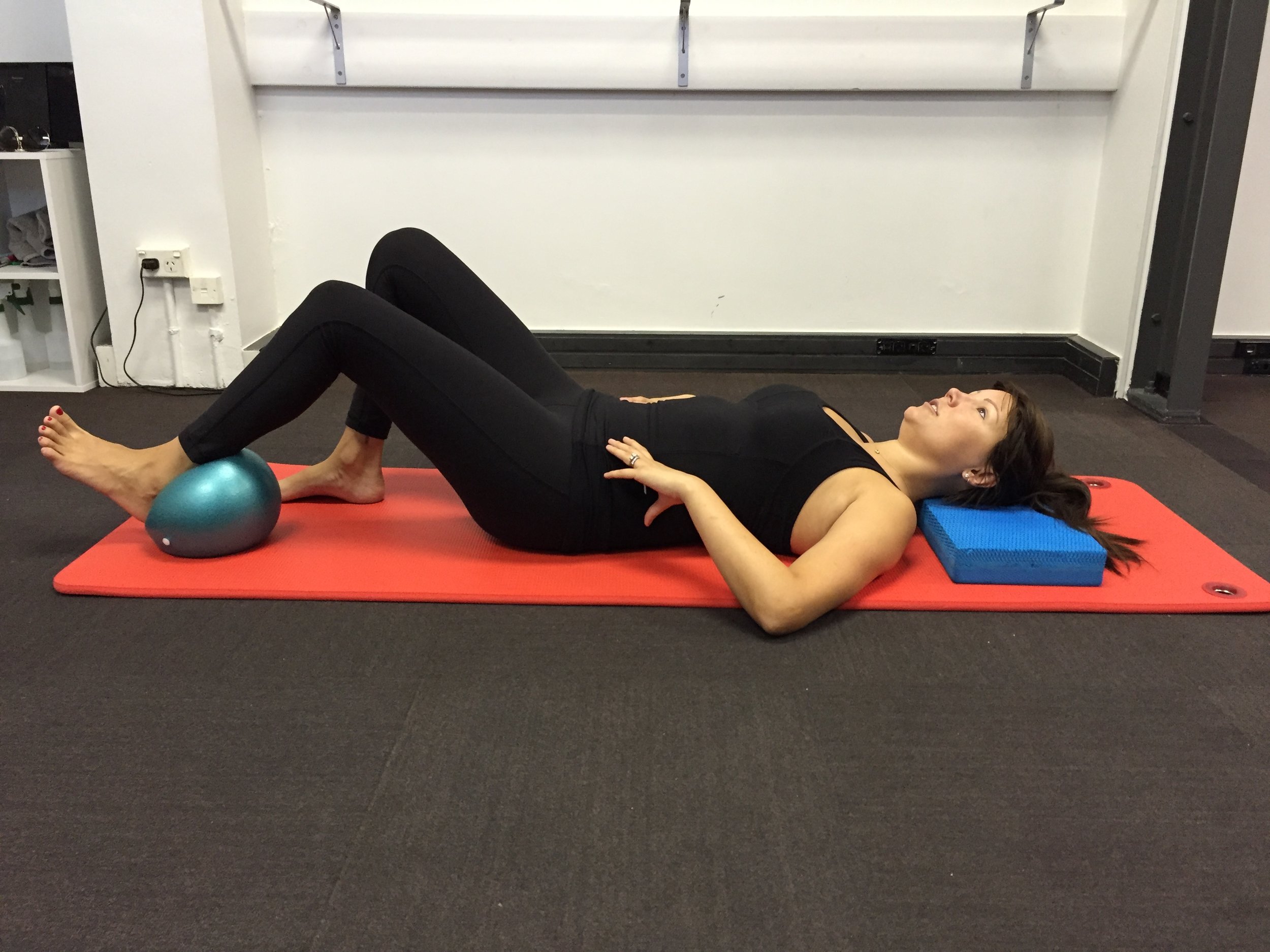
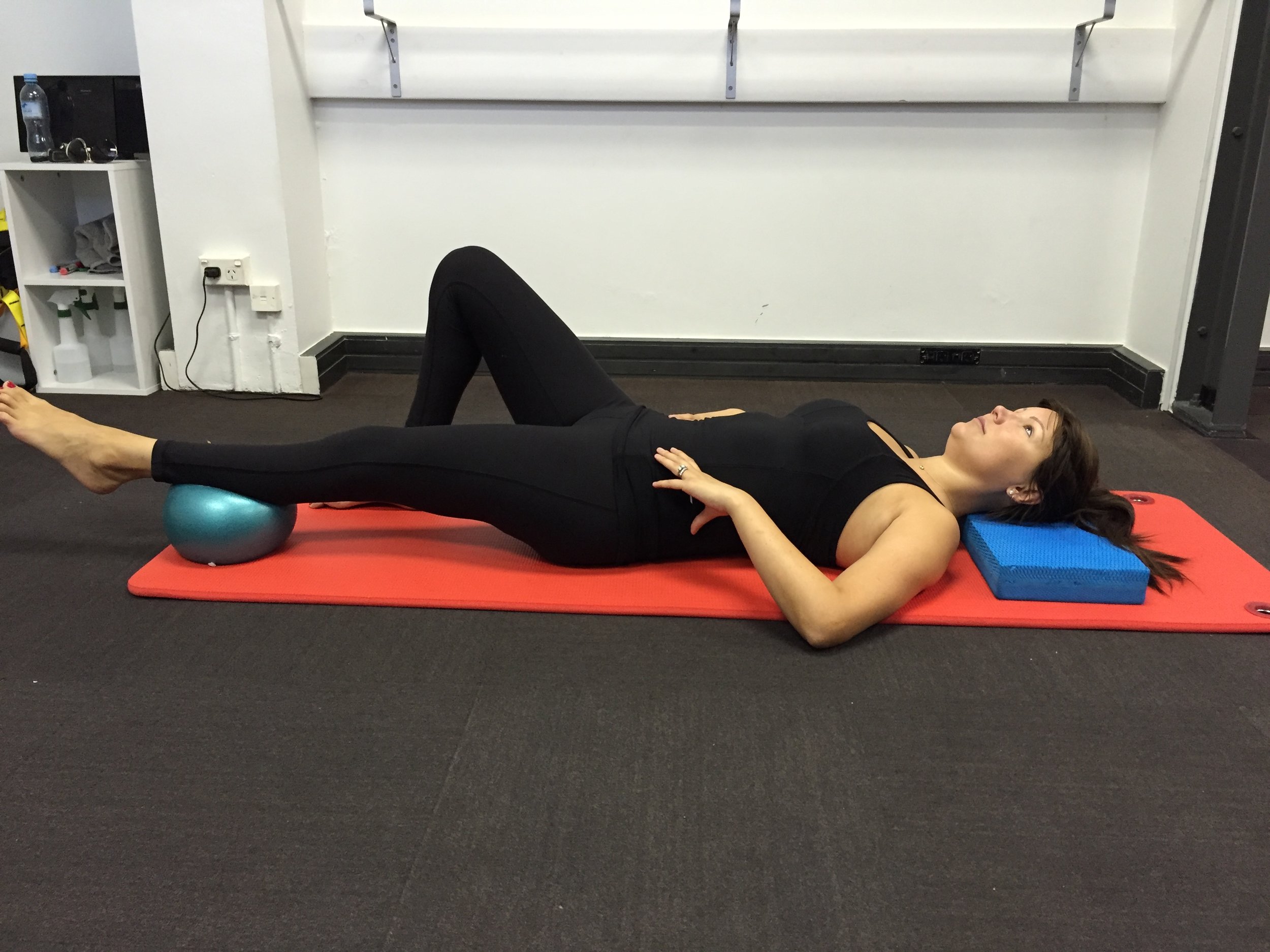
PELVIC CURL/BRIDGE:
Lie on your back with your knees bent. As you exhale, draw up through pelvic floor and abdominals, engage your glutes and peel your spine up off the ground. Inhale at the top and as you exhale, roll back down to the floor – softening through your ribcage and imagine lengthening your spine as you put it back on the ground.
Repeat 3 x 8 – 10 (maintaining form)

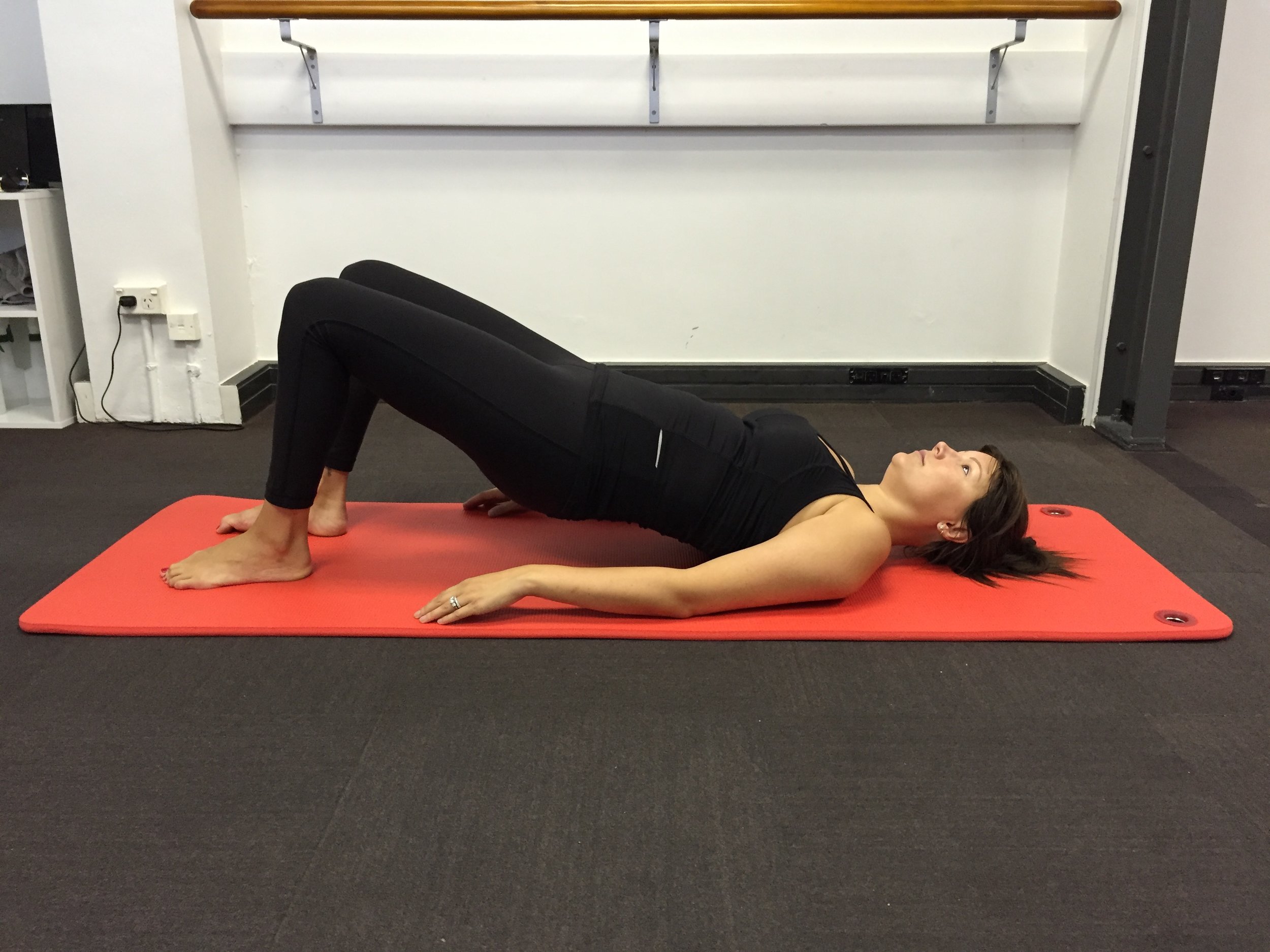
TECHNIQUE TIP – when you are up in the bridge you should imagine a straight diagonal line between your ribs and your hips, rather than arcing up like a rainbow. When you’re in the correct position it should be easy to lift the pelvic floor and engage abs, as gravity gives you a bit of a helping hand! If you feel this exercise more in your back than in your abs and glutes, you know that you aren’t quite nailing the technique, stop and try again later or ask for help if necessary!

Book Openings:
Lie on your side with your knees bent, both hands behind your head. Exhale as you open your elbow up towards the ceiling and then out to the opposite wall. Make sure that your hips stay facing forward and that you keep supporting your head with your hands. Repeat 3 – 4 on each side
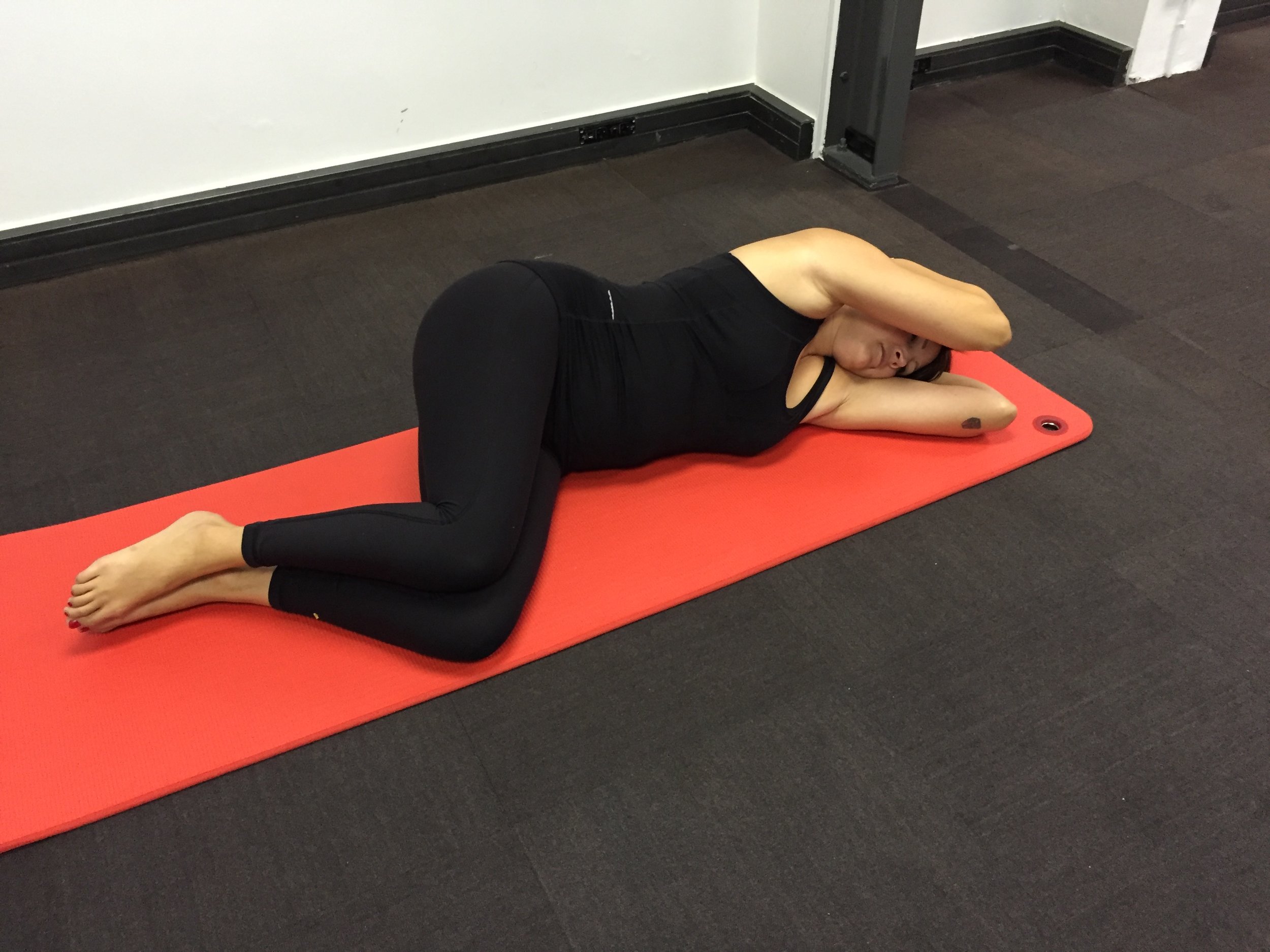
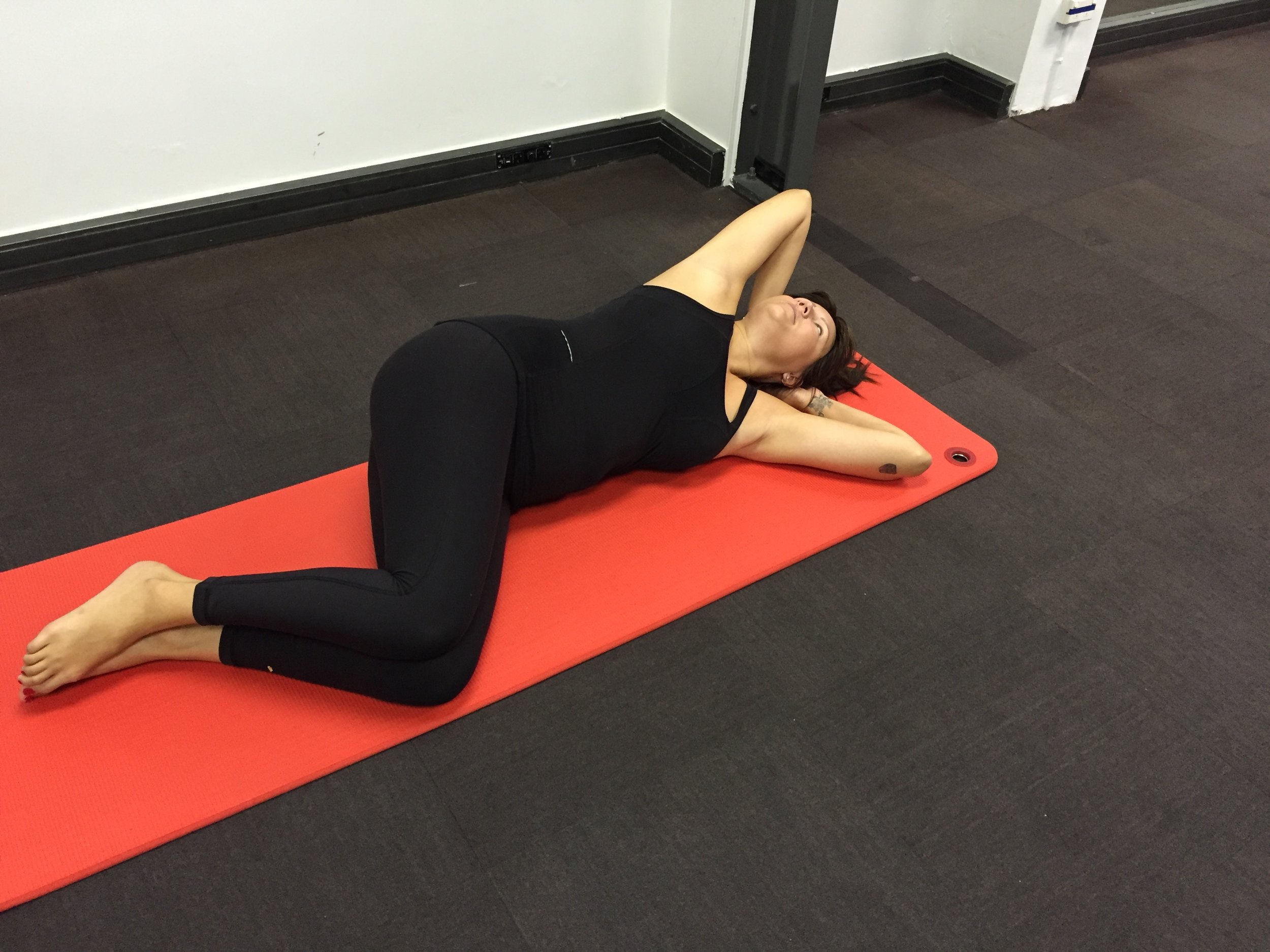

Hip Flexor Stretch:
Kneel with your L foot forward – make sure that your hips are square. Concentrate on gently tucking your tailbone under and squeezing your R butt cheek to really feel the stretch in the front of the R hip. Take your R hand up towards the ceiling to further increase the stretch. Hold at least 30 seconds and repeat other side.

Wall Stretch:
Lie with your legs up the wall (bum as close to the wall as you can get it). Let the legs and back relax as you hold this for at least 30 seconds. Cross your R heel over your L knee to get a stretch in your R butt cheek. To increase the stretch, slide your L heel down towards your butt (aiming to keep your back and bum on the floor). Hold at least 30 seconds and then repeat on the opposite side.
NB: This a great place to practice some good breathing technique, multitasking mums will get this!
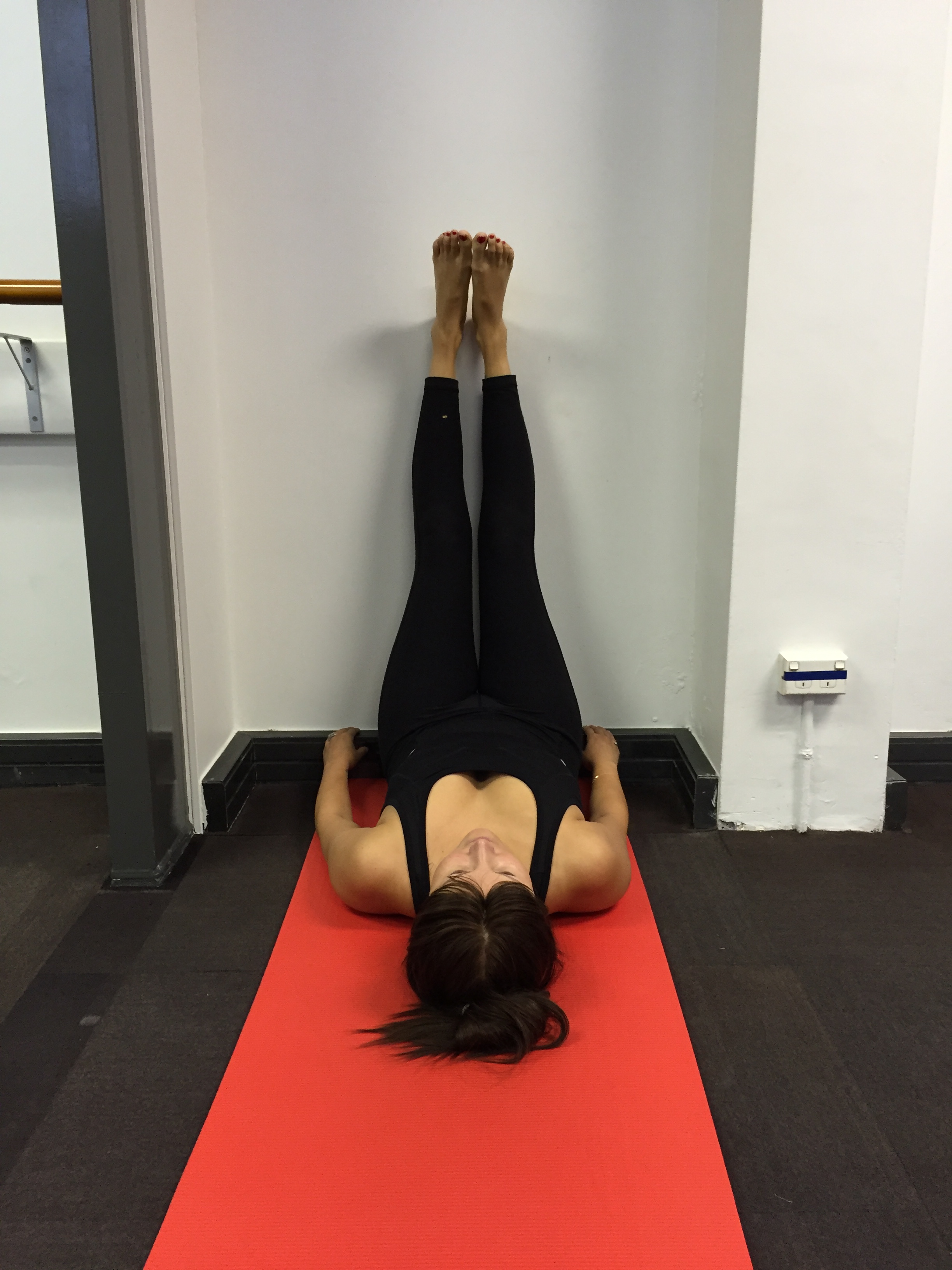
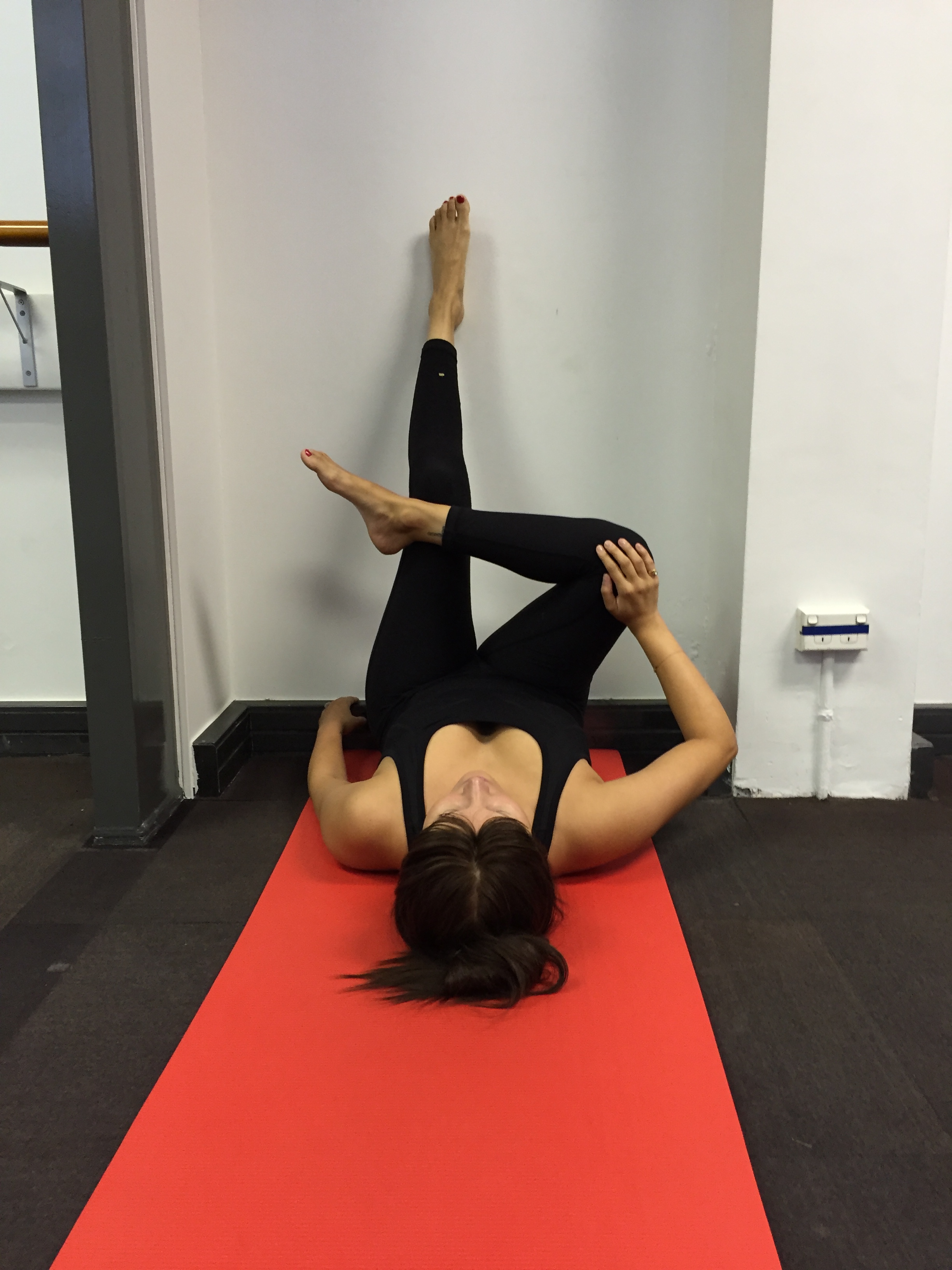
Main points to remember:
First Do No Harm:
If you have a DRA you really want to try and avoid making it any worse than it already is. Take care when getting up out of bed (roll to the side and push yourself up as you did during pregnancy). Think about activating your core when lifting, settling, feeding or bathing your baby. Take care with heavier lifting – shopping bags, capsule, buggy etc and with coughing/sneezing (activate your PFM and abs first!). Also be careful with traditional abdominal strengthening exercises – crunches, planks, double leg lifts and press ups. You may be able to work your way back to these things eventually but they are certainly not the place to start.
Posture and Alignment are incredibly important in helping heal your DRA. Imagine your body like a hose, kinks in the hose cause pressure build ups, and eventually that has to go somewhere – we don’t want that to be out the front of your abdominal wall! Try and focus on your posture through out the day, especially if you are carrying kids!
Breathing technique is vital for your general health – but also has a direct link to spine and pelvic stability. Stop and take some time to practice some good deep breaths.
Deep core muscles - connecting with your pelvic floor and lower abdominals properly is the most important step. Once you have really mastered the technique you can move forward with appropriate strengthening. In fact, you can really do anything as long as you know you can maintain correct core activation throughout the activity. But you must make sure that you have it right – get it checked if you are concerned!
Know your limits – you aren’t doing yourself any favours by thrashing your body if the foundations aren’t there to support you. In the long run you will be doing more harm than good. Take it slow and steady – be patient and persevere. Trust that if you put the work in, you’ll be ready for Anna’s epic next level exercises before you know it.
Summing it up . . .
Our best advice is that if you are concerned about having a DRA, or how you are activating your core, book an assessment with a Women’s Health Physiotherapist or personal trainer who is qualified and experienced in pre and postnatal conditions. They can check your DRA properly and then work with you to ensure that you are on the right track.
Find a women’s health physio here.
Or if you have any questions you can get in touch here or email info@leto.co.nz
Part Two: Exercises for you to do in the gym for you gym bunnies out there
Aaron is my PT from The Exercise Room and he has been amazing with helping me regain strength in my core. When I first came to him he worked really closely with Stacy over what I was allowed to do and not allowed. Some of the below are exercises we did all the time when I still had a large gap and some are more advanced that I "graduated" too once I was stronger and my core was "reconnecting" like Stacy talked about above.
Swiss Ball Cable Rotation
Face cable tower. Position ball in front of stomach. Use outside hand to grab the rope cable attachment. Turn into start position with inside hand grabbing the cable. Plant feet shoulder width apart and focus on maintaining posture and core activation. Keep weight even in both legs, maintain posture, and suck stomach button in towards spine. Twist away from the cable tower and return. Keep movement slow and controlled. Repeat movement on both sides.
Repeat 3x 10-15 on each side
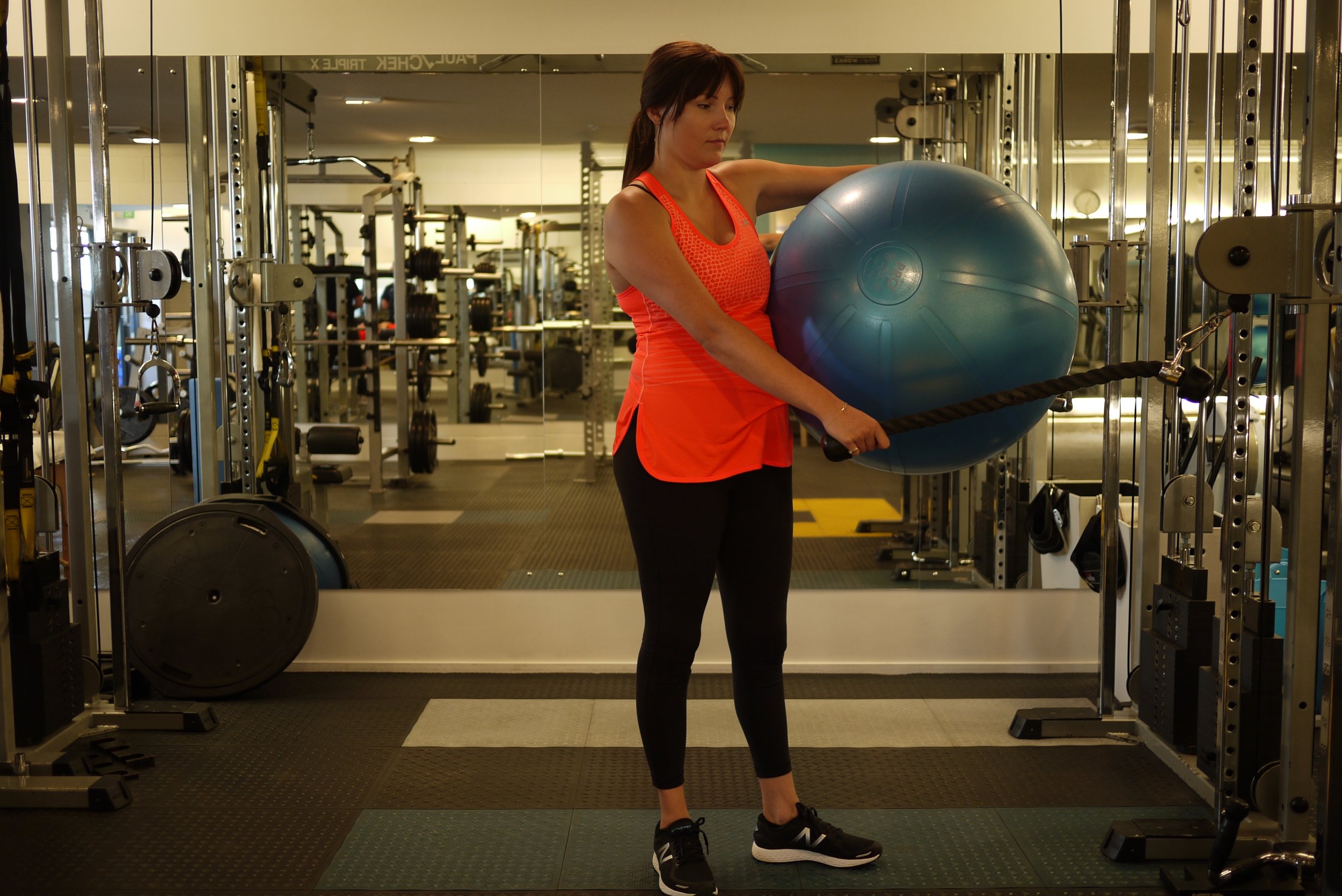
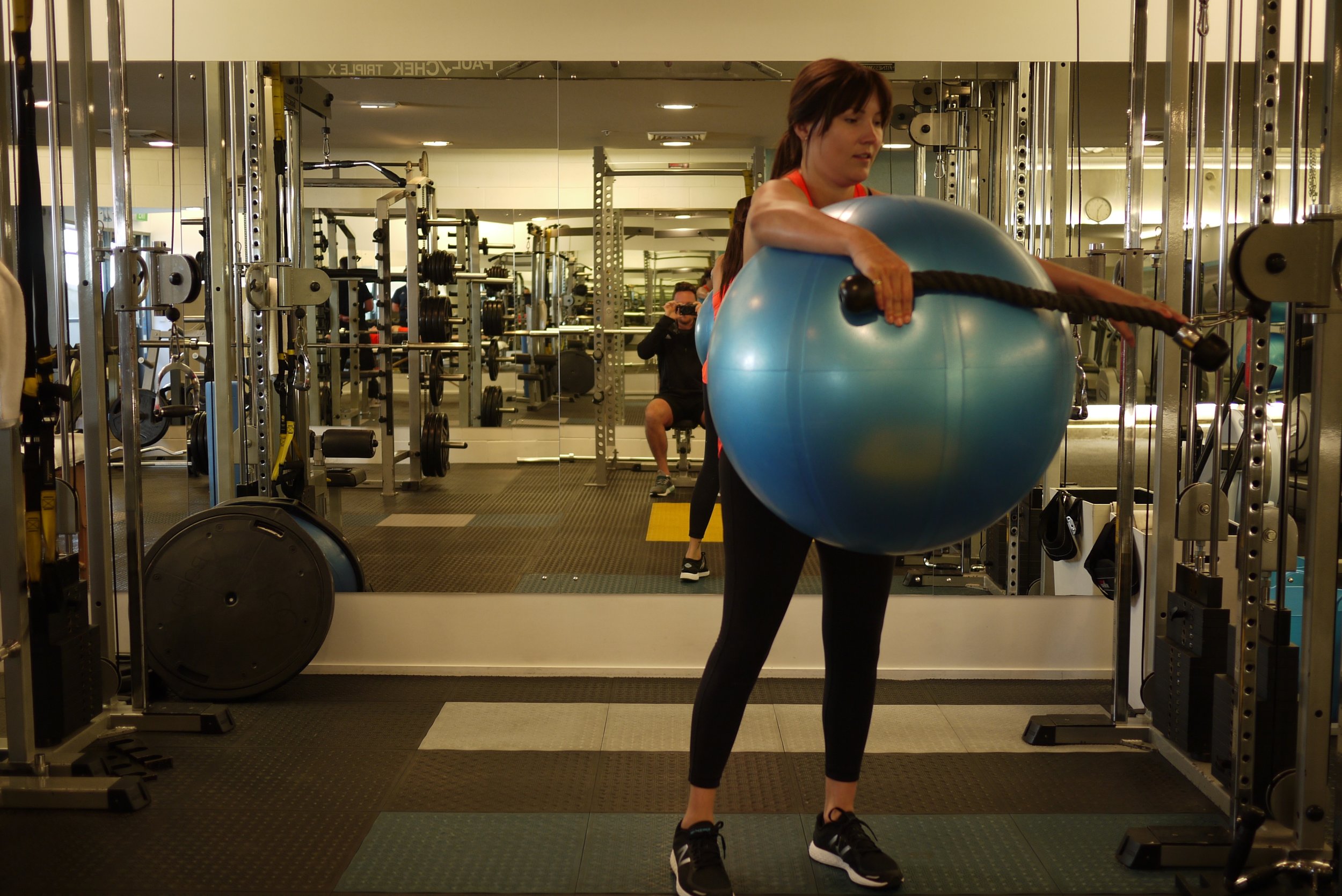
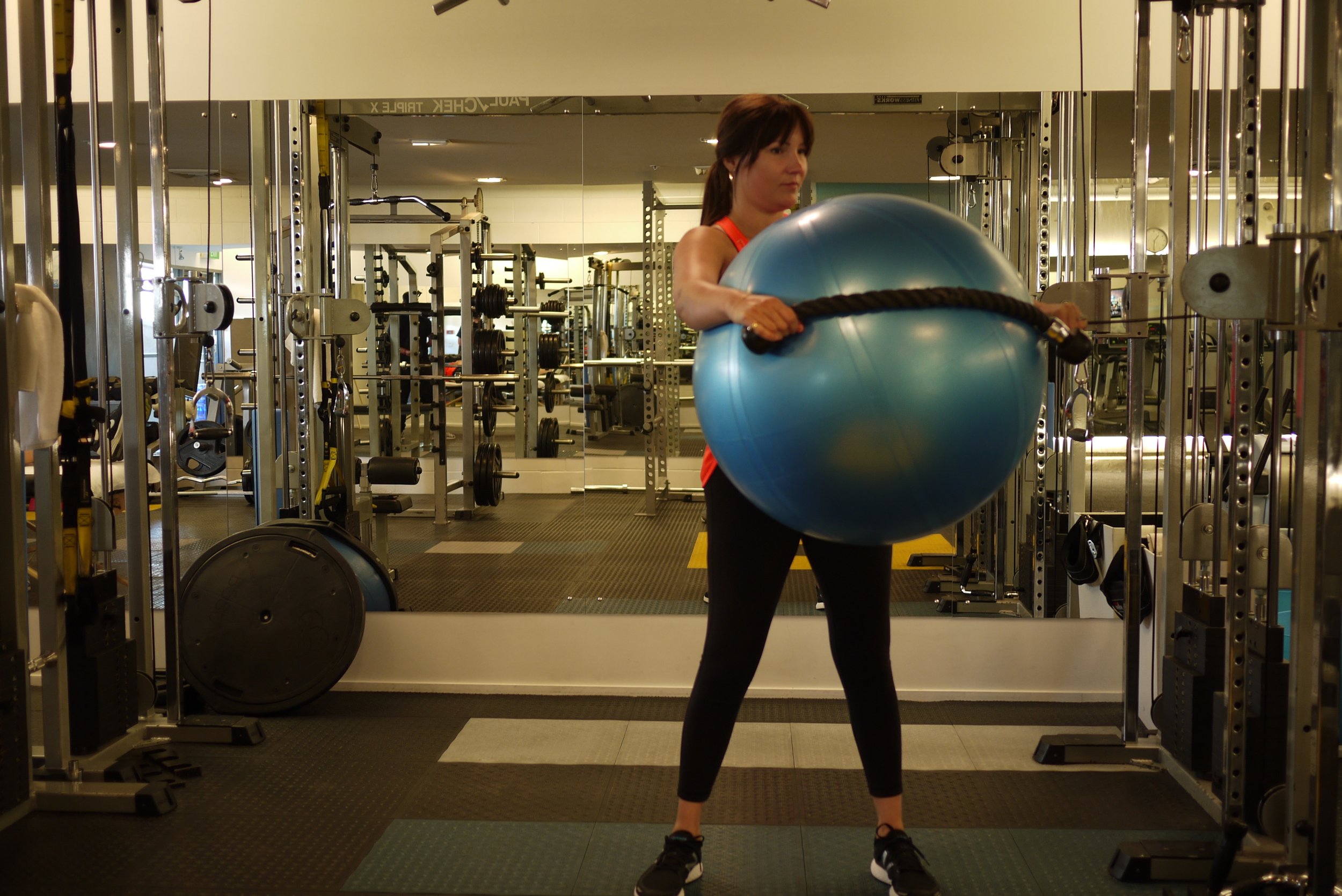

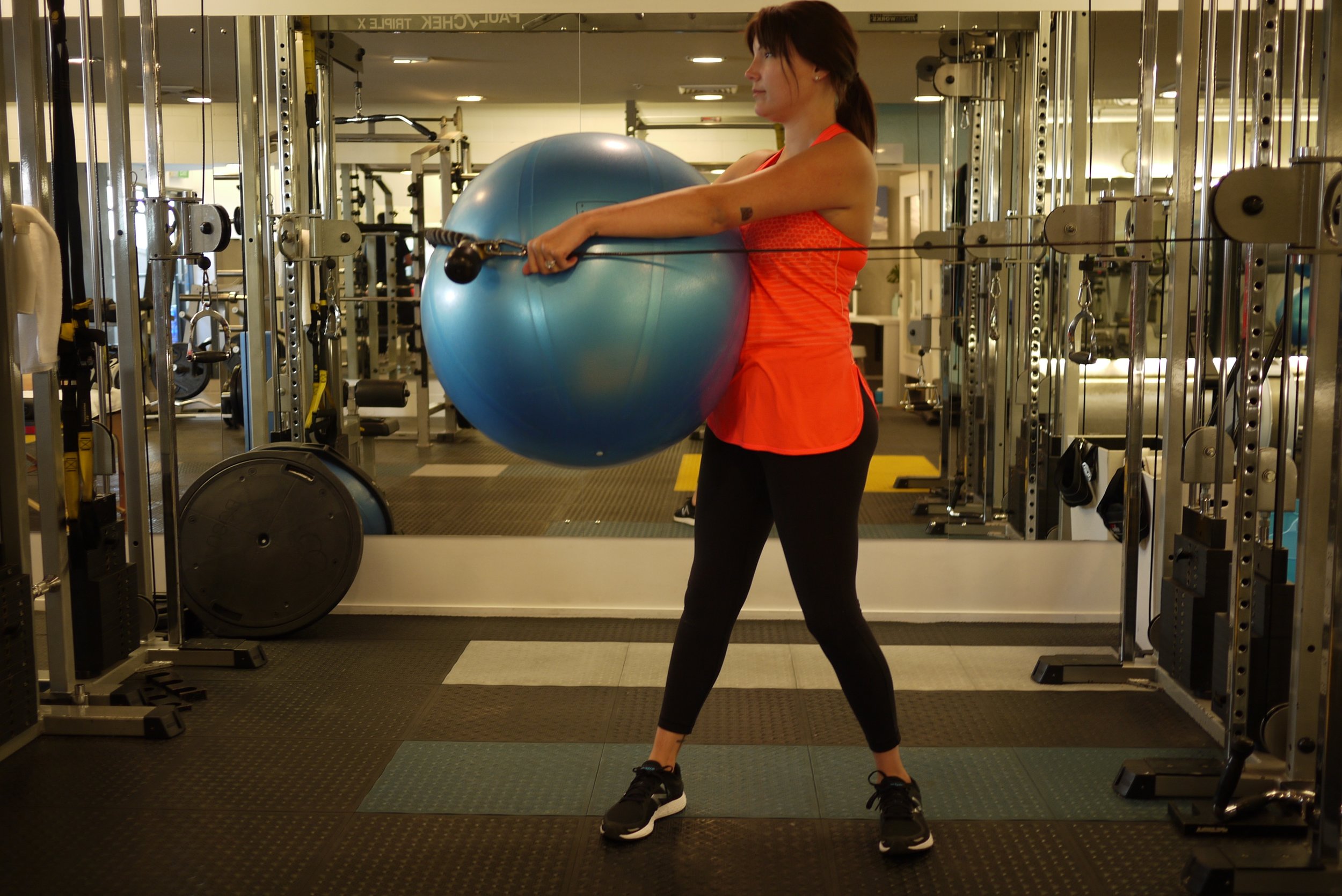
Standing Cable Hold
Stand with inside shoulder next to cable tower. Use inside hand to grab the handle cable attachment. Bring both hands together and hold in front of your sternum. Plant feet shoulder width apart and focus on maintaining posture and core activation. Keep weight even (side to side, and forward and back), maintain posture and suck stomach button in. Push hands away from your sternum and aim for a point approx 40-50cm in front of you then return to sternum. Ensure that your hands travel straight and do not move side to side during this movement. Repeat movement on both sides.
Repeat 3x 10-15 on each side
